Autumn trees for landscaping can completely transform an ordinary yard into a breathtaking seasonal display. As cooler days arrive and summer greens give way to brilliant yellows, fiery oranges, and deep reds, the right trees can add drama, warmth, and texture to your outdoor space. Choosing trees for fall color isn’t just about beauty—it’s also about finding varieties that thrive in your climate, fit your available space, and provide long-term benefits like shade, wildlife habitat, and year-round interest. Whether you want a single striking specimen or a mix of species for layers of color, fall is the ideal time to plan and plant for years of seasonal brilliance.
Table of Contents
1. Add Extra Movement with Grass
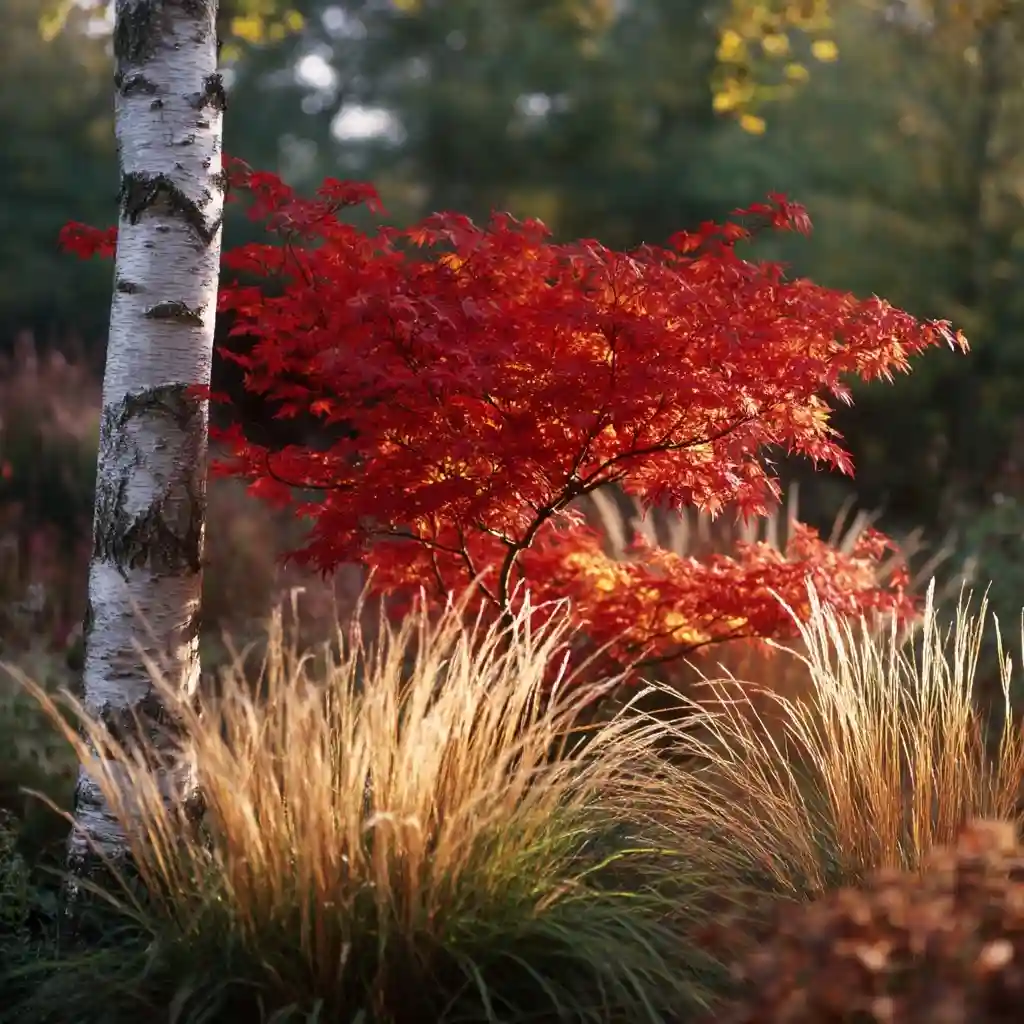
Pairing ornamental grasses with autumn trees for landscaping creates a dynamic scene that moves with the wind and shifts with the season’s colors. Japanese forest grass (Hakonechloa macra), with its graceful, arching blades, adds texture and flow at the base of vibrant fall trees. A red-leaf Japanese maple stands out beautifully against the golden-green grass, while a nearby silver birch brings its own charm with warm yellow foliage and distinctive peeling bark. This combination doesn’t just add visual interest—it also ensures your yard has multiple focal points that catch the eye from different angles, even as the season changes.
2. Impress with a Japanese Maple
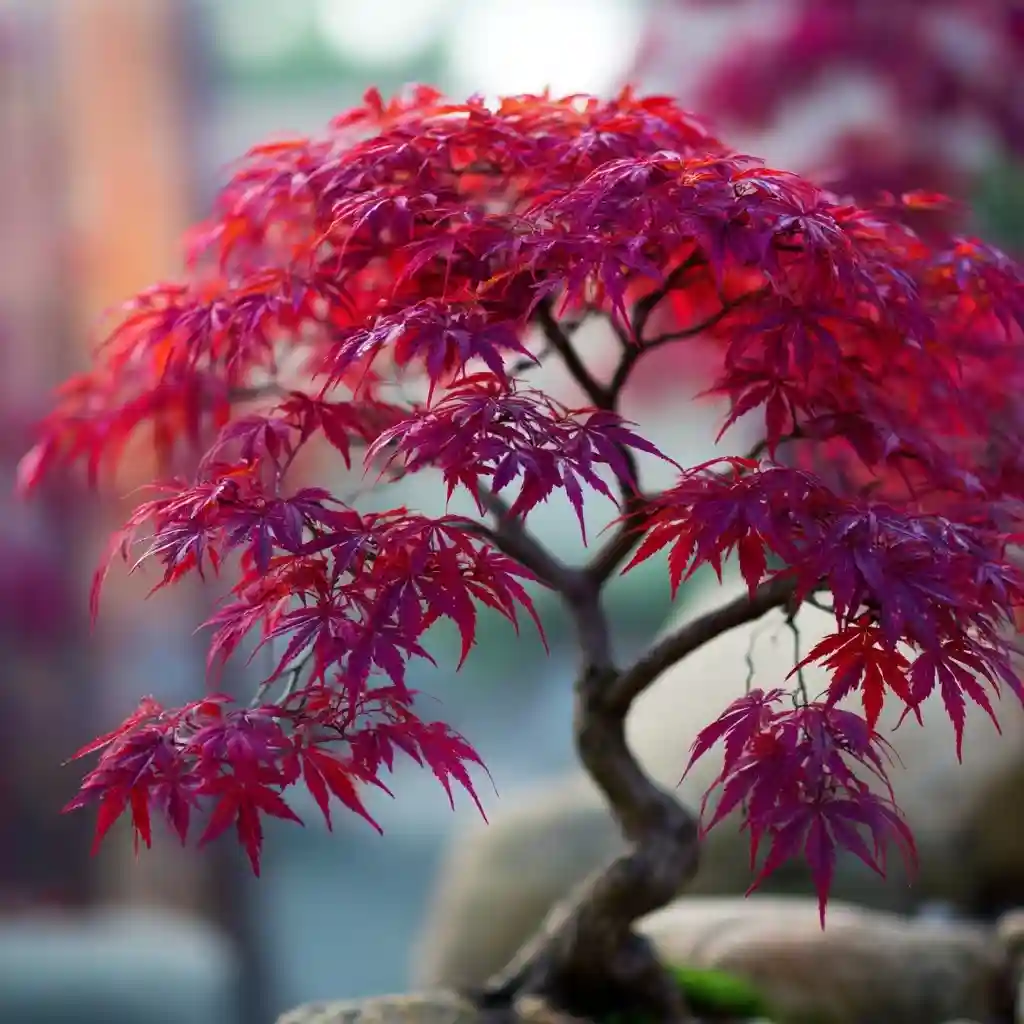
Few trees can rival the elegance of a Japanese maple when it comes to autumn trees for landscaping. With its finely lobed leaves and wide range of cultivars, this tree offers stunning color variations—from deep crimson to bright orange—throughout fall. Its compact size makes it ideal for smaller yards or as an accent in larger gardens. The delicate leaf structure adds intricate texture up close, while the tree’s graceful branching creates a striking silhouette from afar. Plant it where it can be admired from both inside and outside your home, and you’ll enjoy a living piece of art every autumn.
3. Warm Up the Yard with a European Beech Tree
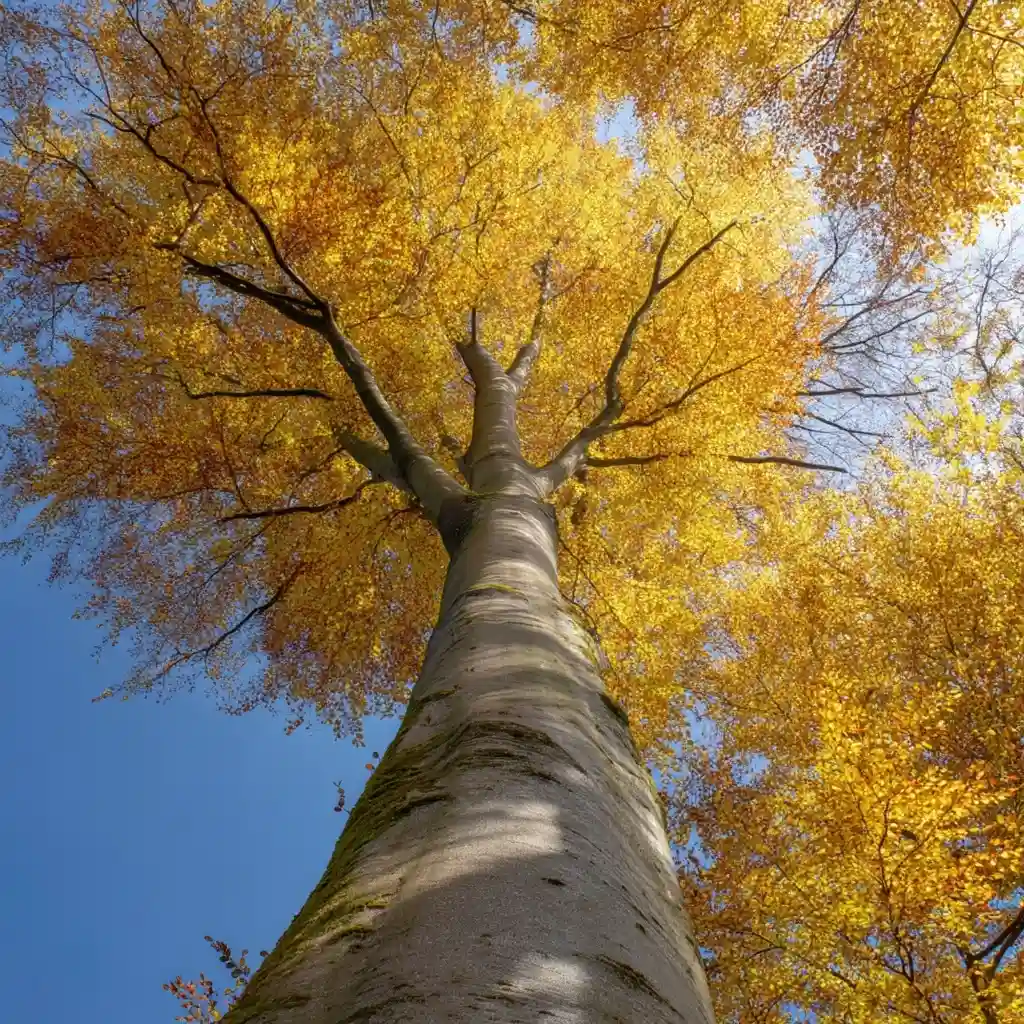
The European beech (Fagus sylvatica) is a timeless choice among autumn trees for landscaping, offering a rich golden-yellow glow that can brighten any yard. Unlike many deciduous trees, beeches tend to hold their leaves well into late autumn, extending the season’s color. Their smooth gray bark adds winter interest, ensuring your landscape remains attractive even after the leaves have fallen. Depending on the variety, they can grow anywhere from 20 to 80 feet tall, making them versatile for both large properties and spacious gardens. As a bonus, European beeches produce edible nuts that attract birds and wildlife to your outdoor space.
4. Charm with a Persian Ironwood Tree
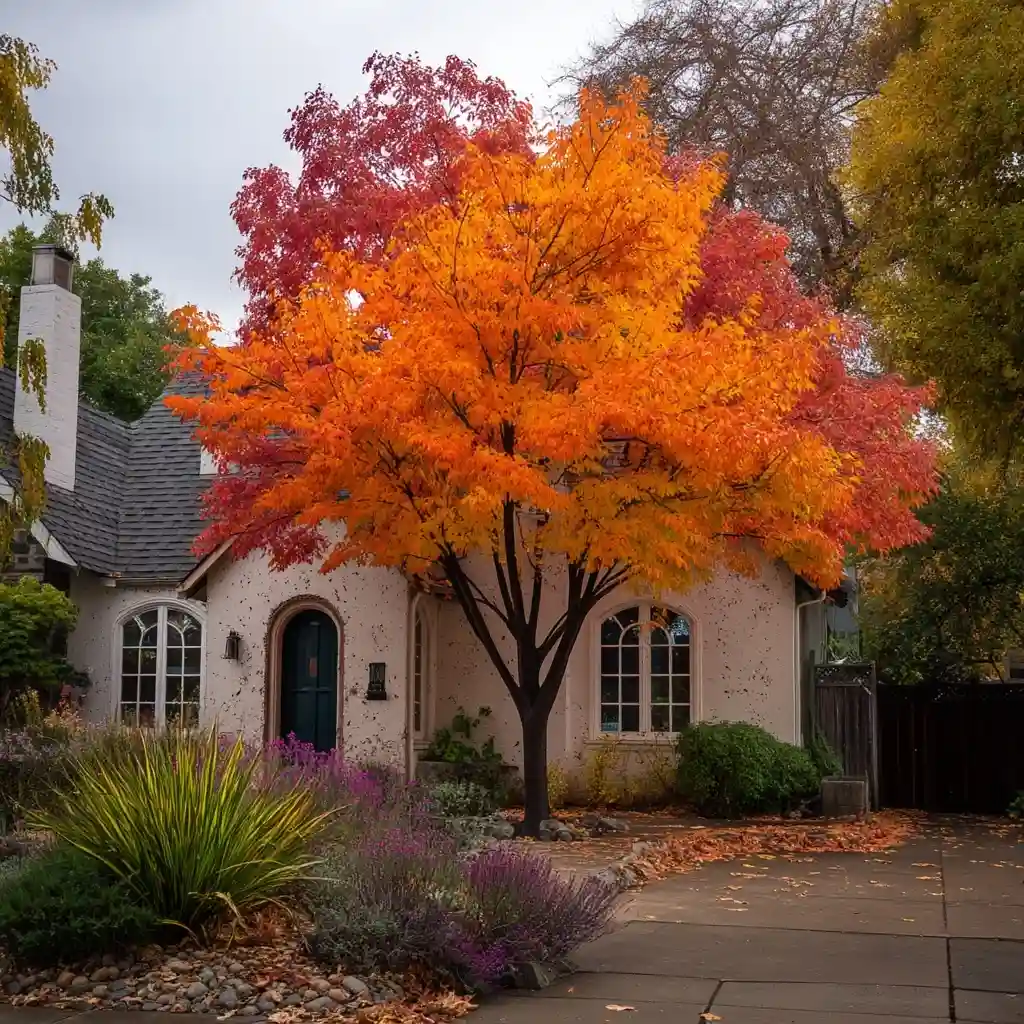
The Persian ironwood (Parrotia persica) is a true multi-season standout and a hidden gem among autumn trees for landscaping. In fall, its leaves turn a mesmerizing mix of crimson, orange, and gold, creating a painterly effect across the canopy. Come winter, the smooth, mottled bark peels to reveal subtle patches of brown, gray, and green, giving the tree year-round visual appeal. In spring, fresh foliage and small, decorative flowers add even more charm. This medium-sized tree works beautifully as a focal point in a front yard or as part of a mixed planting for layered seasonal color.
5. Make a Statement
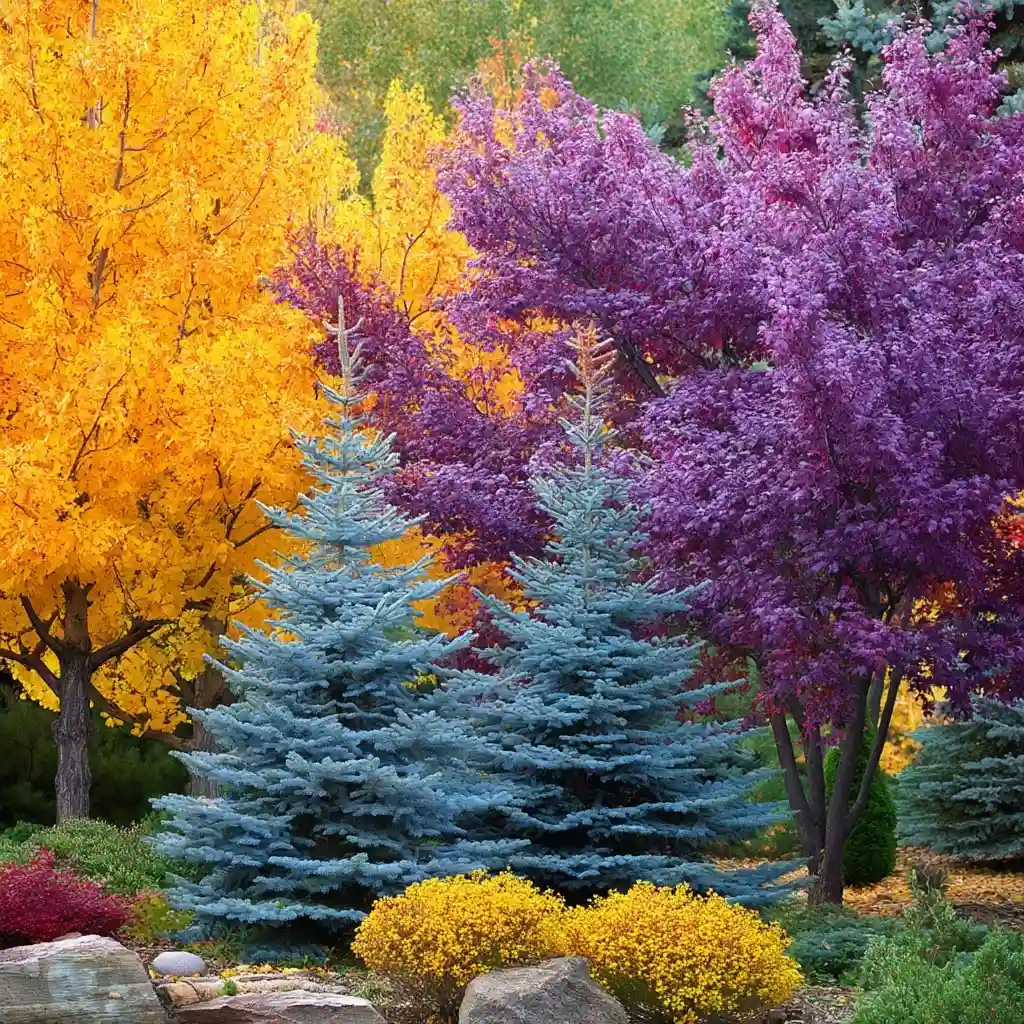
When it comes to autumn trees for landscaping, sometimes more really is more. Planting a variety of fall-color trees together creates a bold, layered display that transforms your yard into a living canvas. A combination of sugar maples, purple-leaf plums, and evergreens like Colorado blue spruce delivers a mix of fiery oranges, deep purples, sunny yellows, and cool greens. The evergreens provide a steady backdrop so the vivid autumn tones pop even more. Whether lining a driveway, framing a garden, or filling an open lawn, this approach ensures your landscape makes an unforgettable seasonal impact.
6. Provide Some Shade
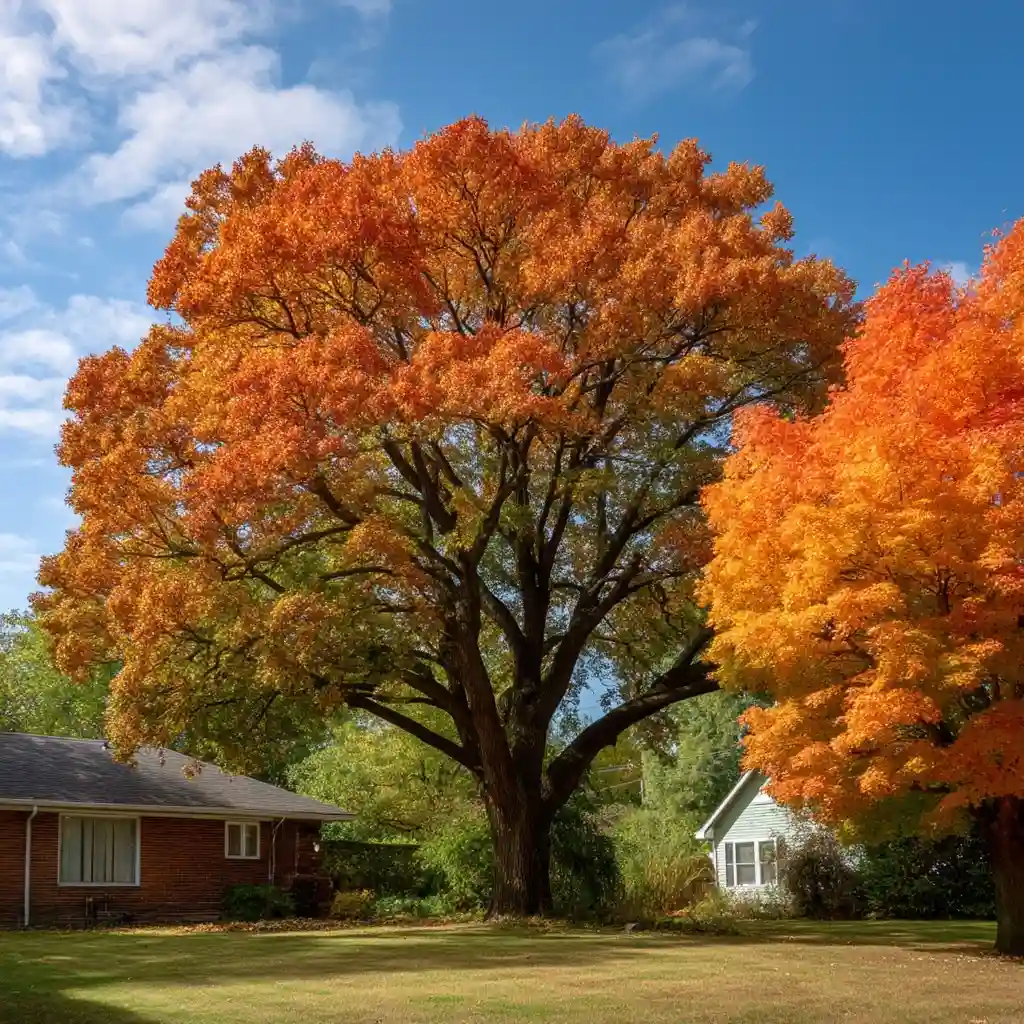
If you want your autumn trees for landscaping to serve both beauty and function, consider planting a shade-giving giant like the oak. Oaks are hardy, drought-tolerant, and adaptable to a variety of urban and suburban conditions. Their broad canopies provide welcome relief in summer, while in autumn their leaves shift to warm shades of bronze and russet. Pairing an oak with a smaller sugar maple beneath it adds a layered effect—deep shade above and brilliant yellow-orange color below. This combination not only enhances your yard’s visual appeal but also creates a comfortable space for relaxing outdoors in every season.
7. Contrast with Your Trees
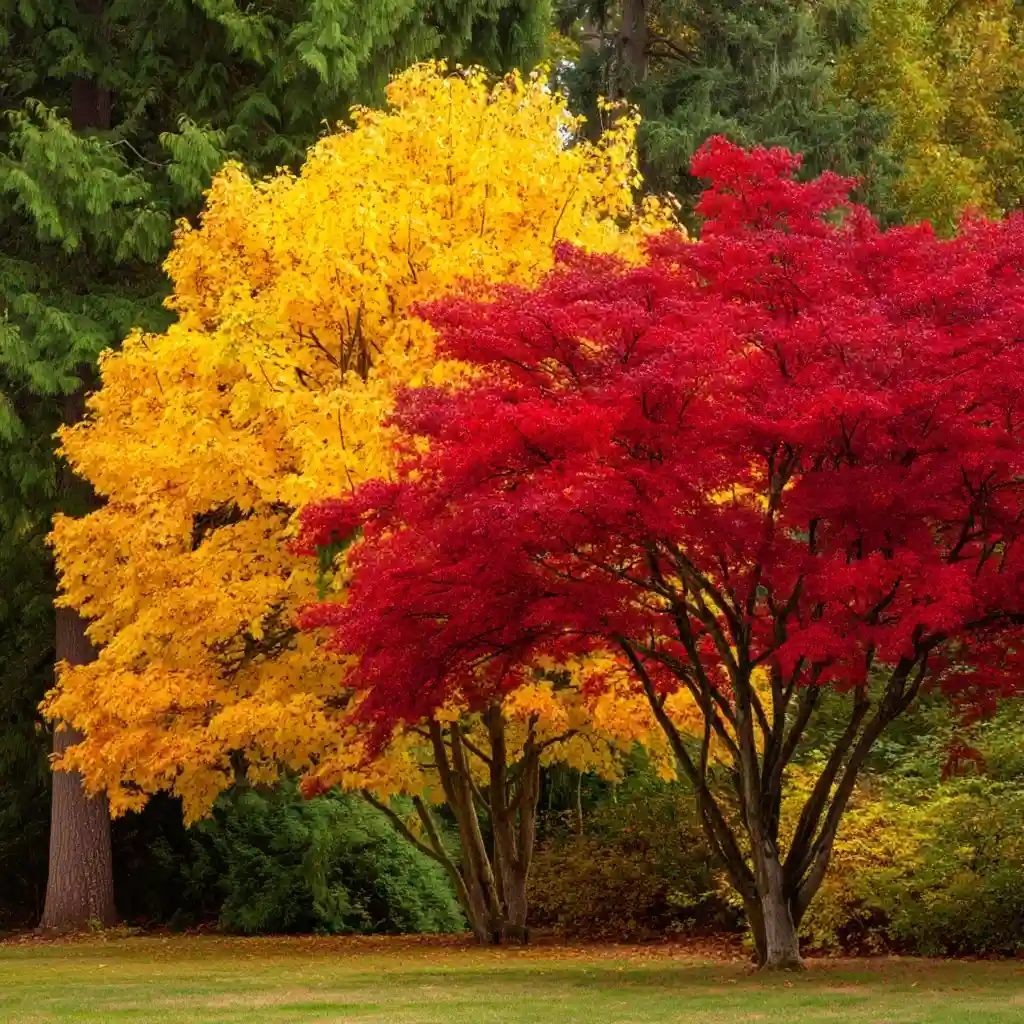
Creating contrast is one of the most effective ways to make autumn trees for landscaping stand out. Pairing trees with different leaf colors—such as a sugar maple’s golden-orange glow alongside a red maple’s rich crimson—results in a vibrant, eye-catching display. This variation in hue adds depth and dimension to your yard, especially when placed against a green backdrop of pines, cedars, or junipers. The changing colors also bring a sense of movement to the landscape, as each tree shifts at its own pace. It’s a strategy that works in both large open spaces and smaller, more intimate gardens.
8. Bring a Grand Feel with a Sugar Maple Tree
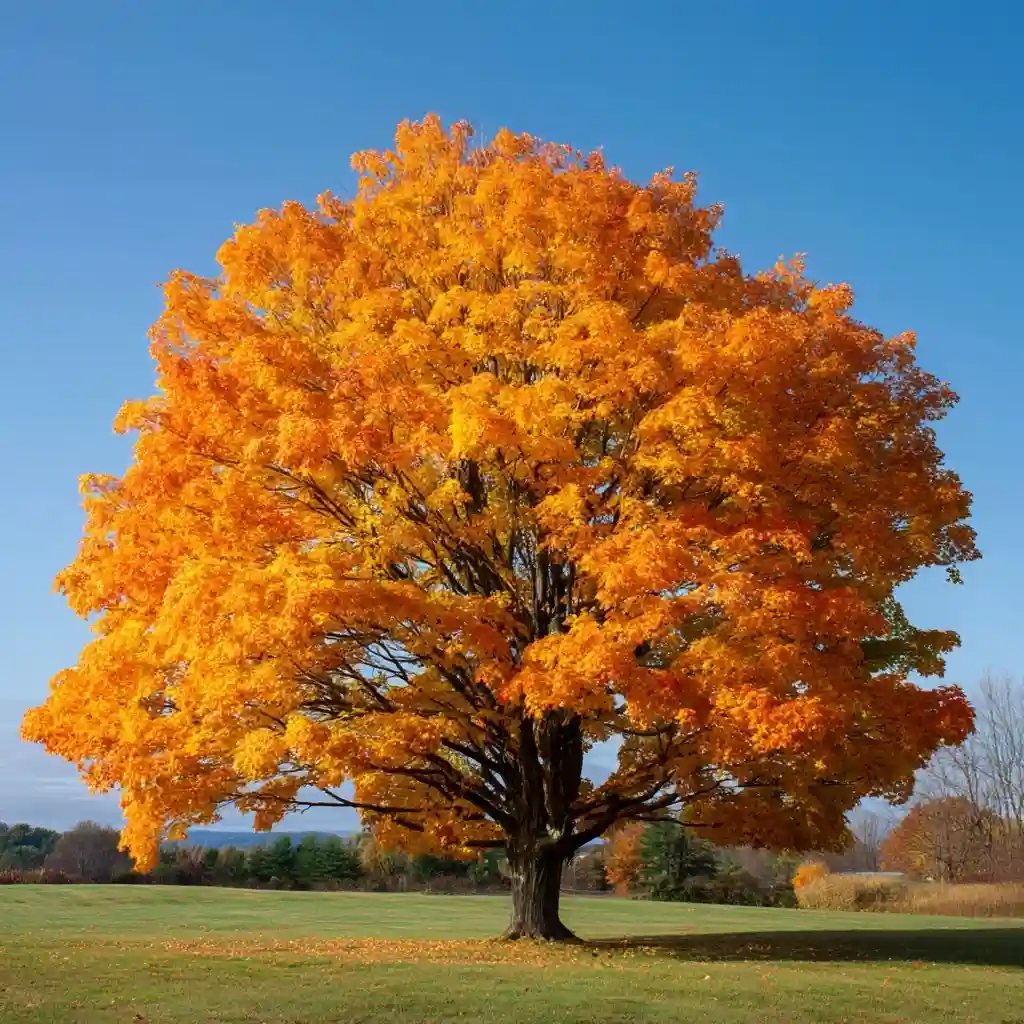
The sugar maple (Acer saccharum) is a classic choice among autumn trees for landscaping, prized for its dependable yellow-to-orange foliage and stately presence. Known for growing quickly—often adding three feet or more per year—it can reach impressive heights, making it ideal for large yards or properties that need a focal point. Beyond its visual appeal, the sugar maple offers a sweet bonus: its sap can be tapped and turned into maple syrup. Planting one ensures you’ll enjoy both a grand display of fall color and a touch of homestead charm every year.
9. Keep it Simple
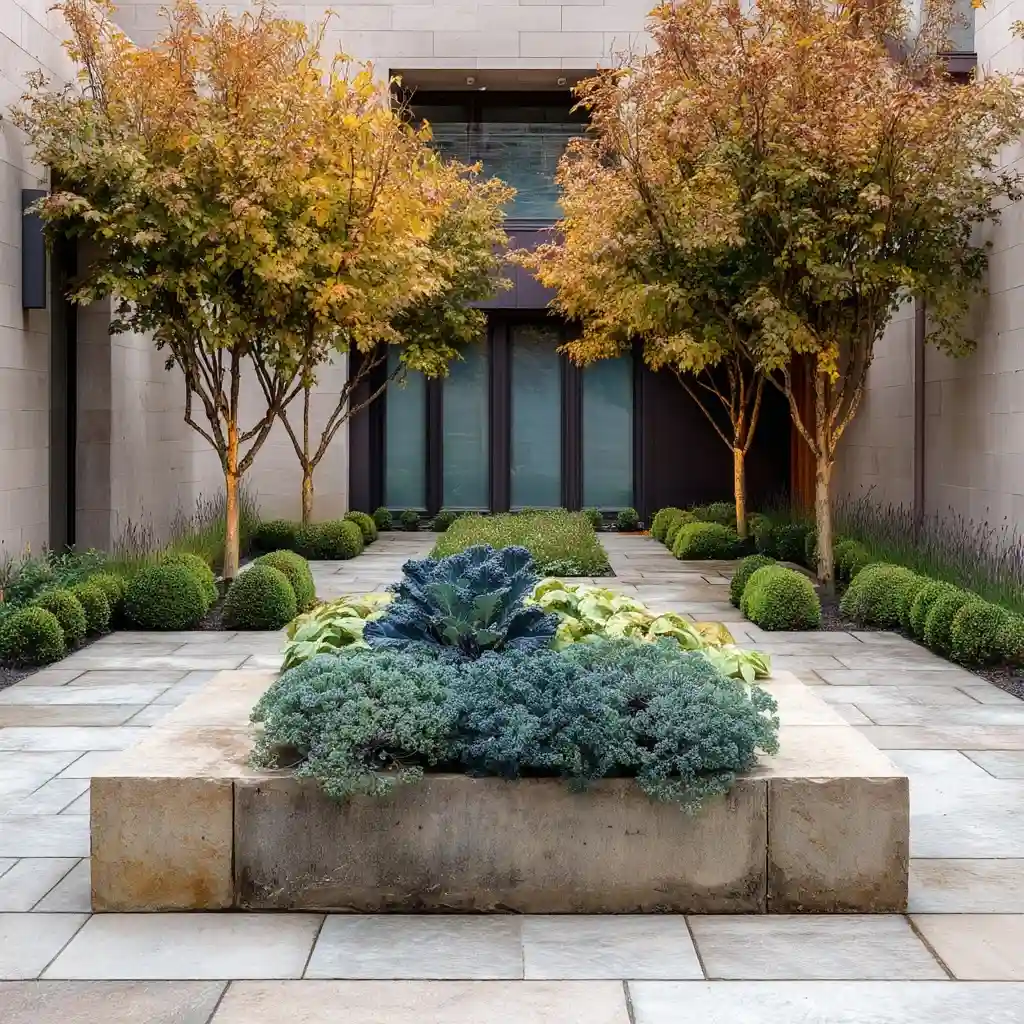
Not every yard needs a dense forest of autumn trees for landscaping to make an impact. A minimalist approach—such as pairing a few small maples with low, structured shrubs like boxwood—can create a clean, elegant look. This balance allows each tree’s color to shine without overwhelming the space. Accents like ornamental kale and pansies in containers can add seasonal flair at ground level, complementing the warm hues above. By keeping the design straightforward, you highlight the beauty of each element while maintaining a tidy, low-maintenance landscape.
10. Match with the Architecture
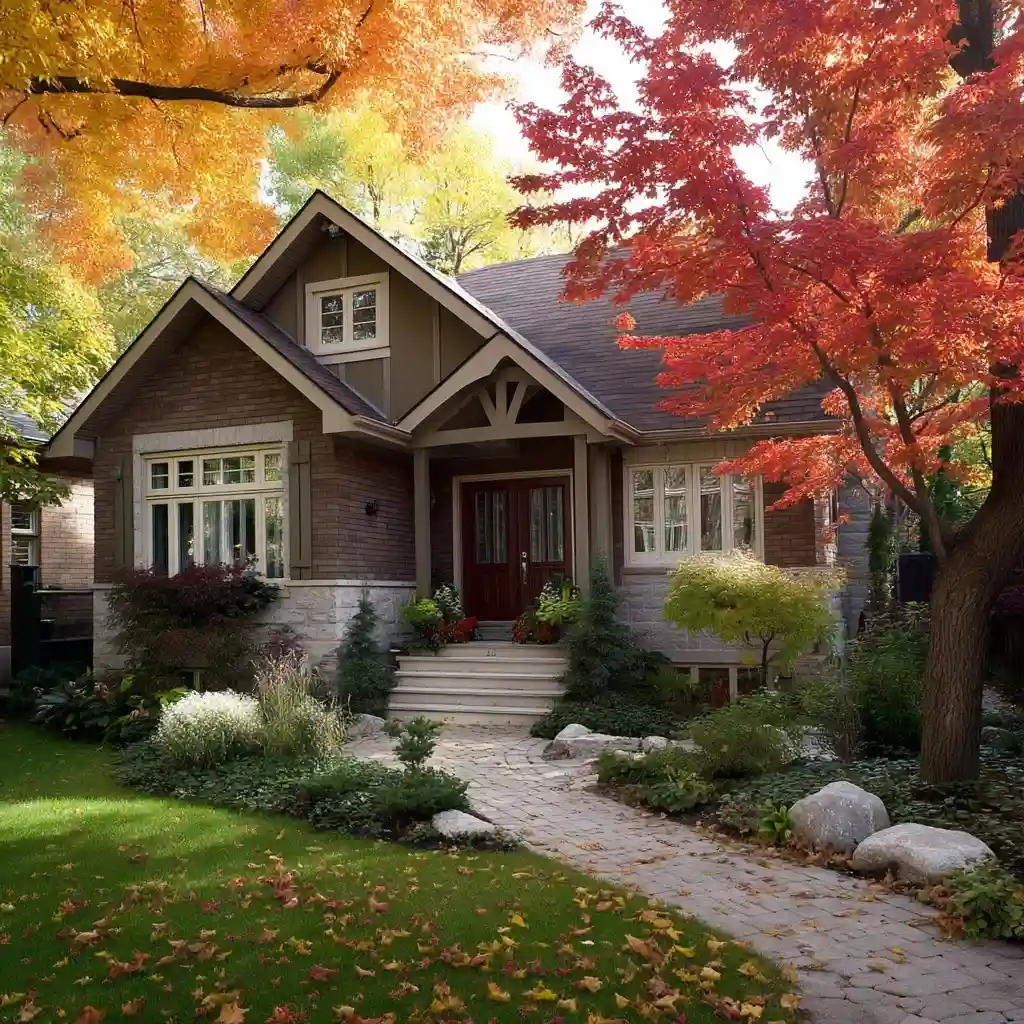
Choosing autumn trees for landscaping that complement your home’s architecture creates a harmonious and intentional design. For example, a Japanese maple’s deep red leaves can mirror the tones of brown shutters or wood trim, tying the landscape to the building’s exterior. A sugar maple nearby adds a burst of yellow that warms the entire scene. When selecting trees, consider their mature size and root spread so they have ample room to grow without impacting your home’s foundation. This thoughtful pairing of color and structure ensures your landscape feels like a natural extension of your house.
11. Brighten Up the Facade
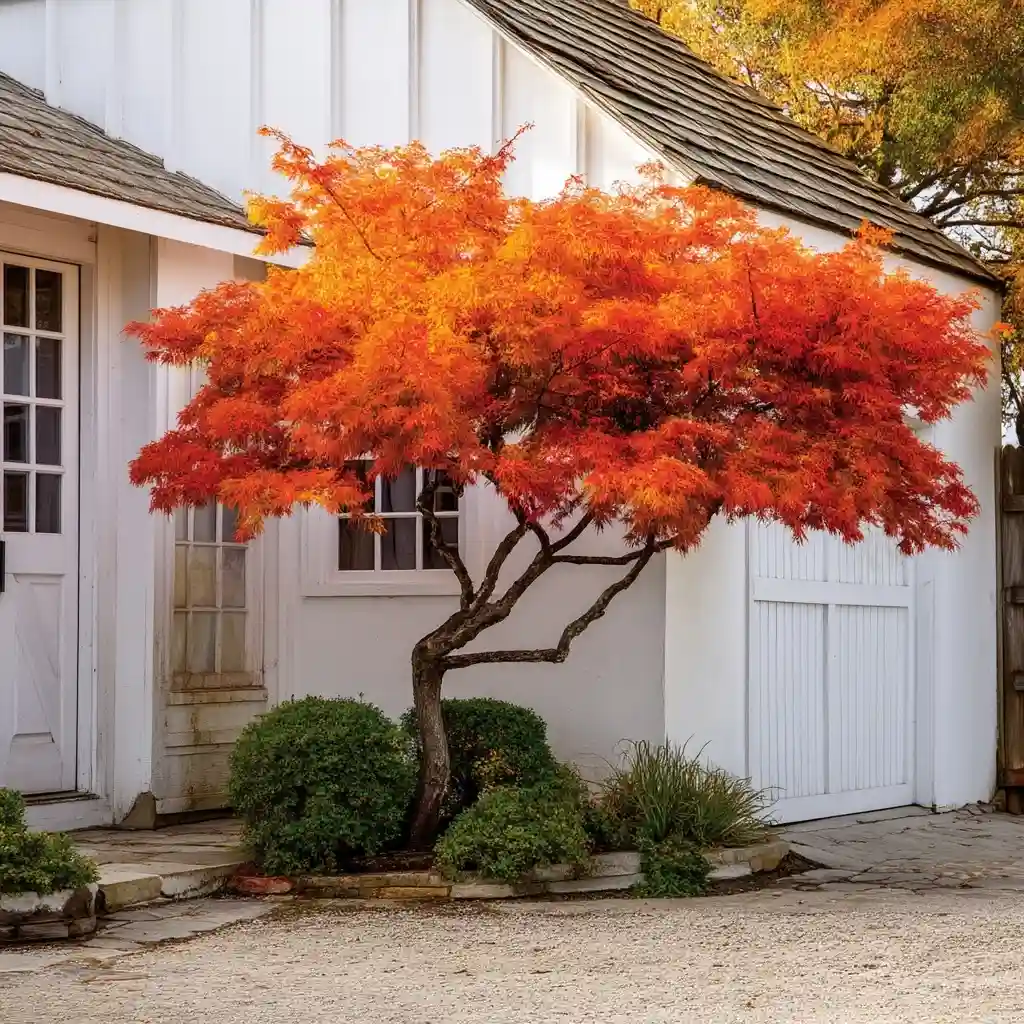
Positioning autumn trees for landscaping near your home’s front exterior can instantly elevate its curb appeal. A Japanese maple, for example, transitions from lush green in summer to brilliant reddish-orange in fall, creating a stunning contrast against light-colored siding or white farmhouse walls. The vibrant foliage frames the architecture, softening hard lines and adding warmth to the overall look. By placing colorful trees strategically near windows or entryways, you also bring seasonal beauty into your indoor views, making your home feel even more inviting as the cooler months set in.
12. Uplift Your Backyard Fireplace
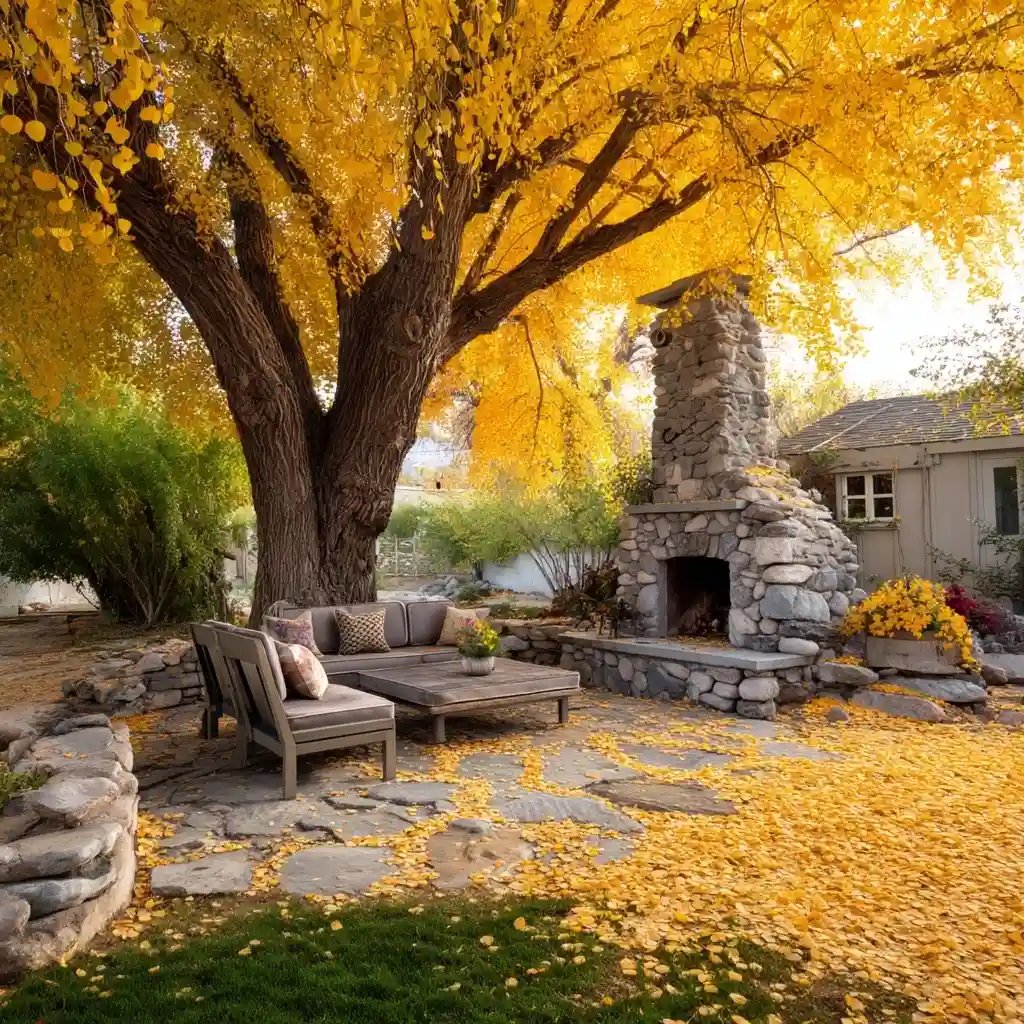
Placing autumn trees for landscaping near an outdoor fireplace adds both color and atmosphere to your backyard retreat. The Fremont cottonwood (Populus fremontii) is a standout choice, with golden-yellow leaves that shimmer and “tremble” in the breeze. As they fall, they create a soft, golden carpet that enhances the cozy ambiance of a firelit evening. Pairing the cottonwood with a smaller evergreen, like a cypress, adds a year-round green accent that balances the seasonal color. This combination turns your fireplace area into a welcoming focal point for gatherings well into the crisp autumn nights.
13. Create a Raised Bed Around Your Trees
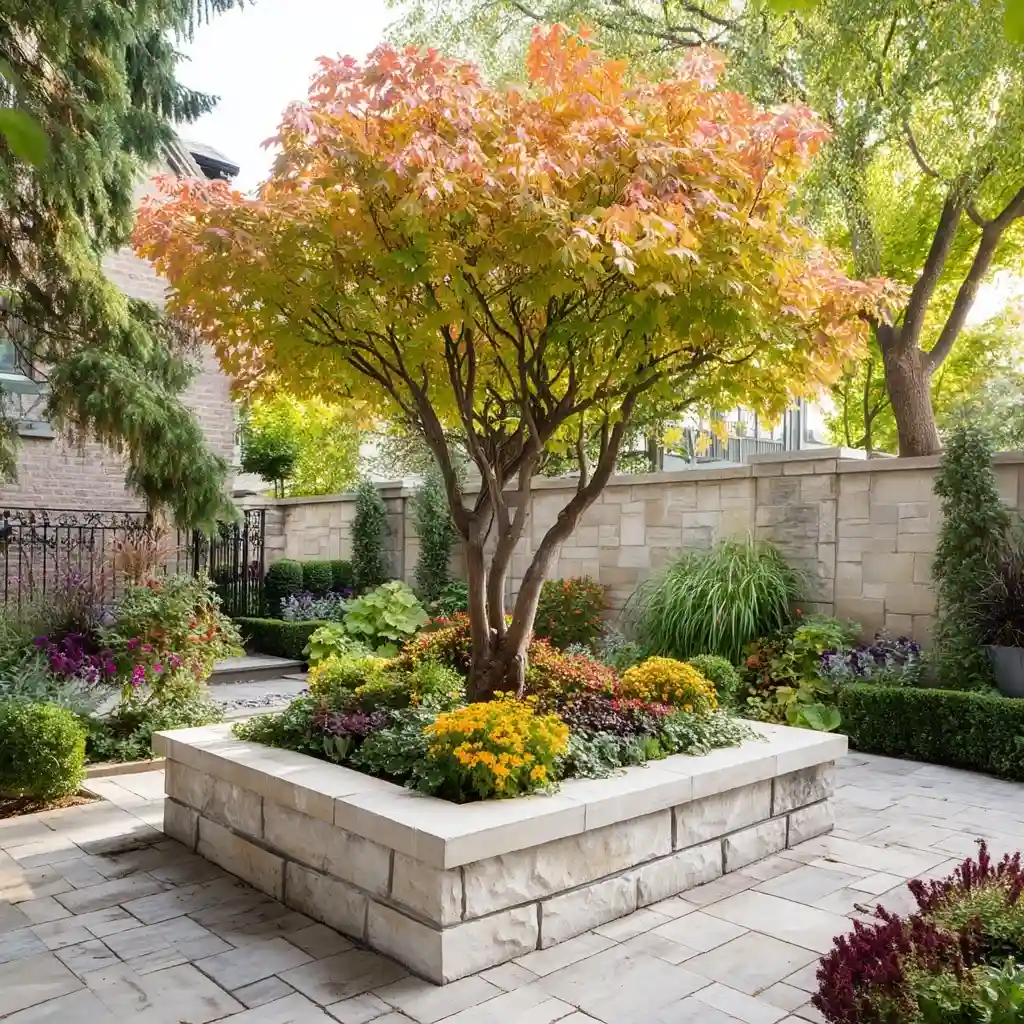
Enhancing autumn trees for landscaping with a raised bed can add structure, improve soil quality, and showcase your trees as true focal points. Using stone or brick pavers to form a low wall around a maple or other colorful fall tree not only defines the space but also makes maintenance easier. A raised bed helps control weeds, improves drainage, and allows for layered plantings—such as seasonal flowers or ground covers—that complement the tree’s autumn hues. This approach blends functionality with visual appeal, turning your trees into centerpiece features in the landscape.
14. Keep it Low
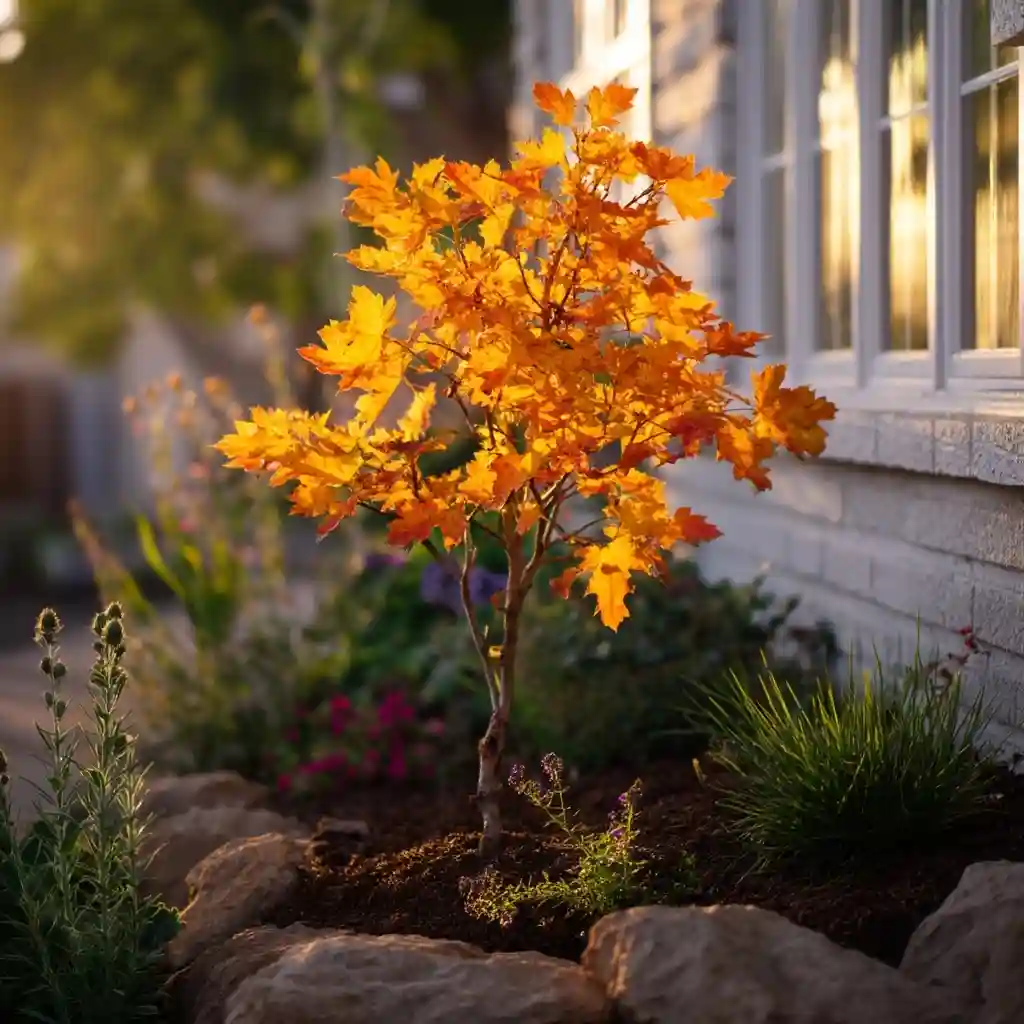
Not all autumn trees for landscaping need to soar sky-high to make an impact. Smaller varieties, like compact sugar maples, bring vibrant orange, yellow, and red foliage without overwhelming the space. Their modest height makes them perfect for front yards, courtyards, or garden beds where scale is important. Low-growing trees also allow more light to reach surrounding plants and can be easier to maintain. By keeping the height in check, you still enjoy the richness of fall color while maintaining a balanced, approachable landscape design.
15. Complement Outdoor Natural Features
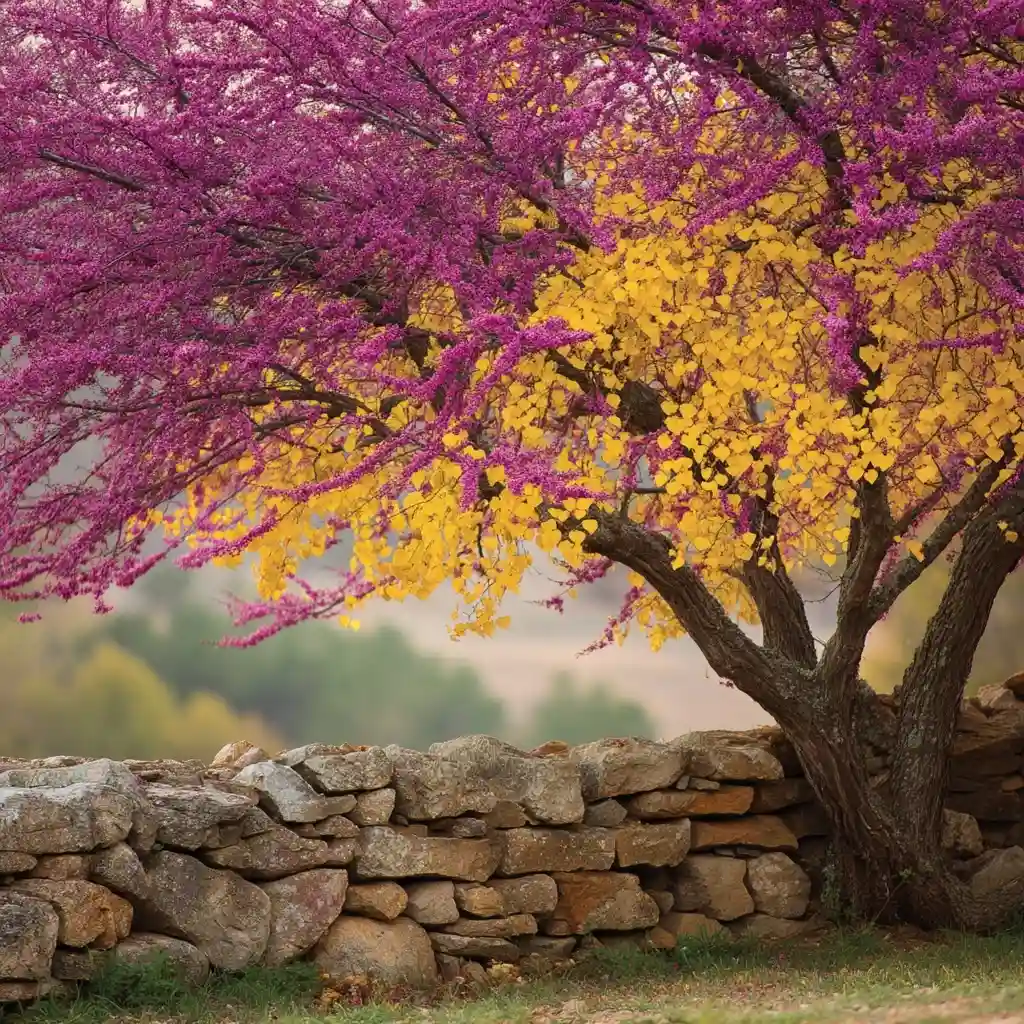
Blending autumn trees for landscaping with your property’s existing natural elements creates a seamless, cohesive look. The Eastern redbud (Cercis canadensis), for example, offers heart-shaped leaves that turn pale yellow in fall, pairing beautifully with rustic stone walls or wooden fences. In spring, its pinkish-purple blooms add another layer of seasonal interest. Choosing trees that echo or enhance your yard’s natural textures—be it rock, water, or wood—ensures the landscape feels harmonious year-round. This approach works especially well in rural or woodland settings where you want the design to look effortlessly integrated.
16. Add Some Greenery Color
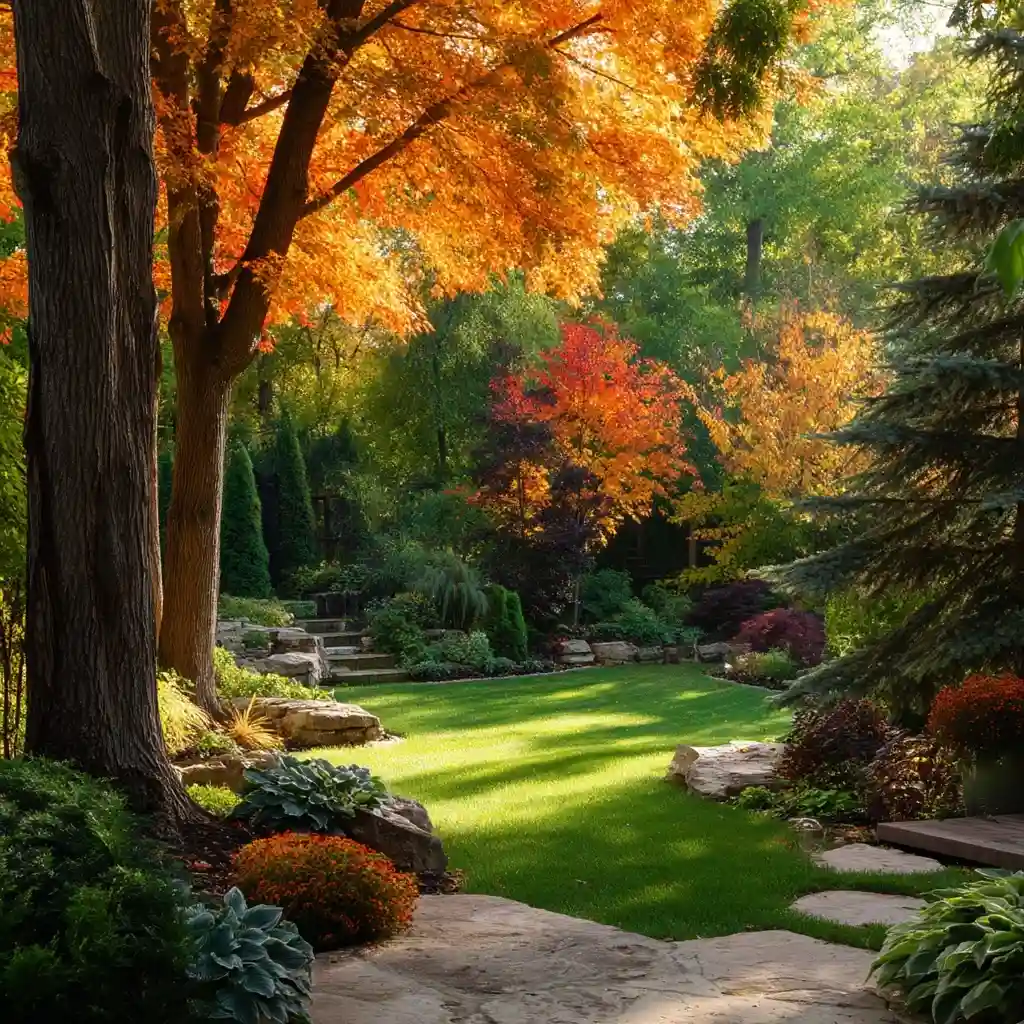
While fall is known for its fiery reds and golds, incorporating evergreens into your autumn trees for landscaping plan ensures year-round vibrancy. Pine trees, with their rich green needles, provide a strong backdrop that makes autumn foliage pop even more. Planting evergreens in fall gives them time to focus on root development before winter, setting them up for healthy growth in spring. They also serve as shelter for wildlife and add structure to your yard when deciduous trees have shed their leaves. This mix of seasonal color and lasting greenery creates a balanced, inviting landscape.
17. Reinforce with Flowers
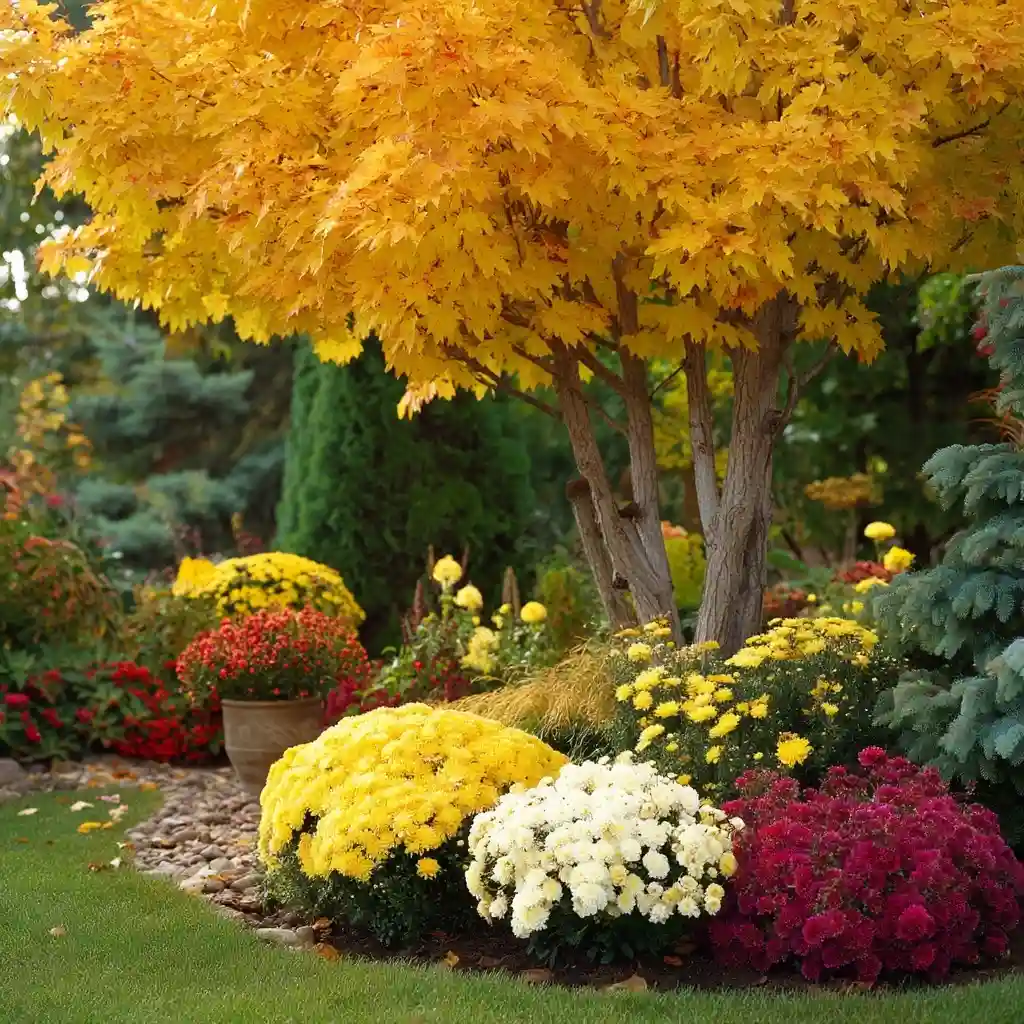
Pairing blooms with autumn trees for landscaping can amplify your yard’s seasonal charm. Bright chrysanthemums in shades of yellow, red, and pink add bursts of color at ground level, complementing the fiery tones of nearby maples. Ornamental cabbages and kale bring unique textures, while potted plants like pyracantha offer orange berries that echo fall’s warm palette. By layering trees with seasonal flowers, you create depth and variety, ensuring that every part of the landscape—from canopy to soil—contributes to the autumn display. This approach also extends visual interest well into late fall.
18. Maximize on Texture
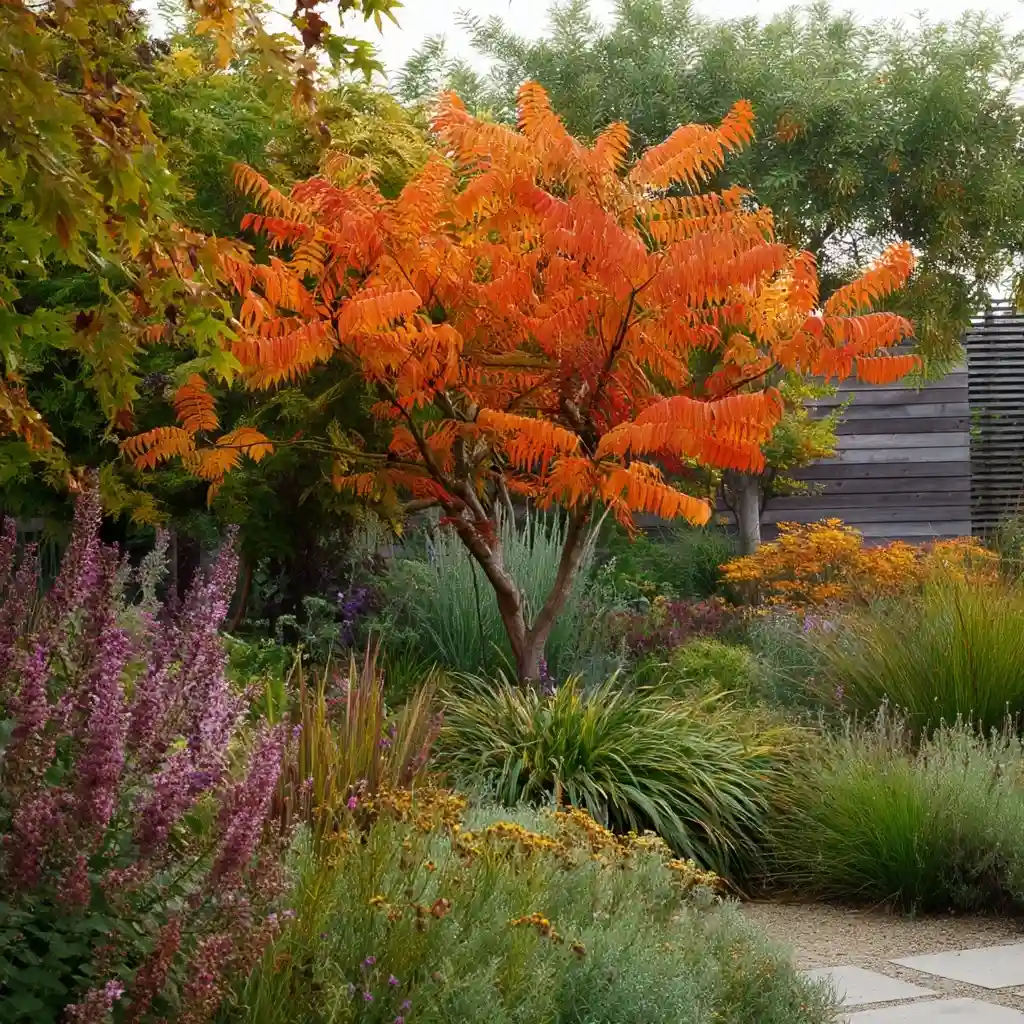
Incorporating different shapes and surfaces into your autumn trees for landscaping adds richness and complexity to the overall design. Staghorn sumac (Rhus typhina), with its bold, feathery leaves and upright seed clusters, delivers vivid reds and oranges while introducing a tropical-like texture. Pairing it with a laceleaf Japanese maple offers a fine, delicate contrast, and adding a shrub like tall verbena brings yet another layer of form and color. Combining trees and plants with varying leaf sizes, bark patterns, and growth habits keeps the landscape visually engaging from every angle.
19. Hide the Facade
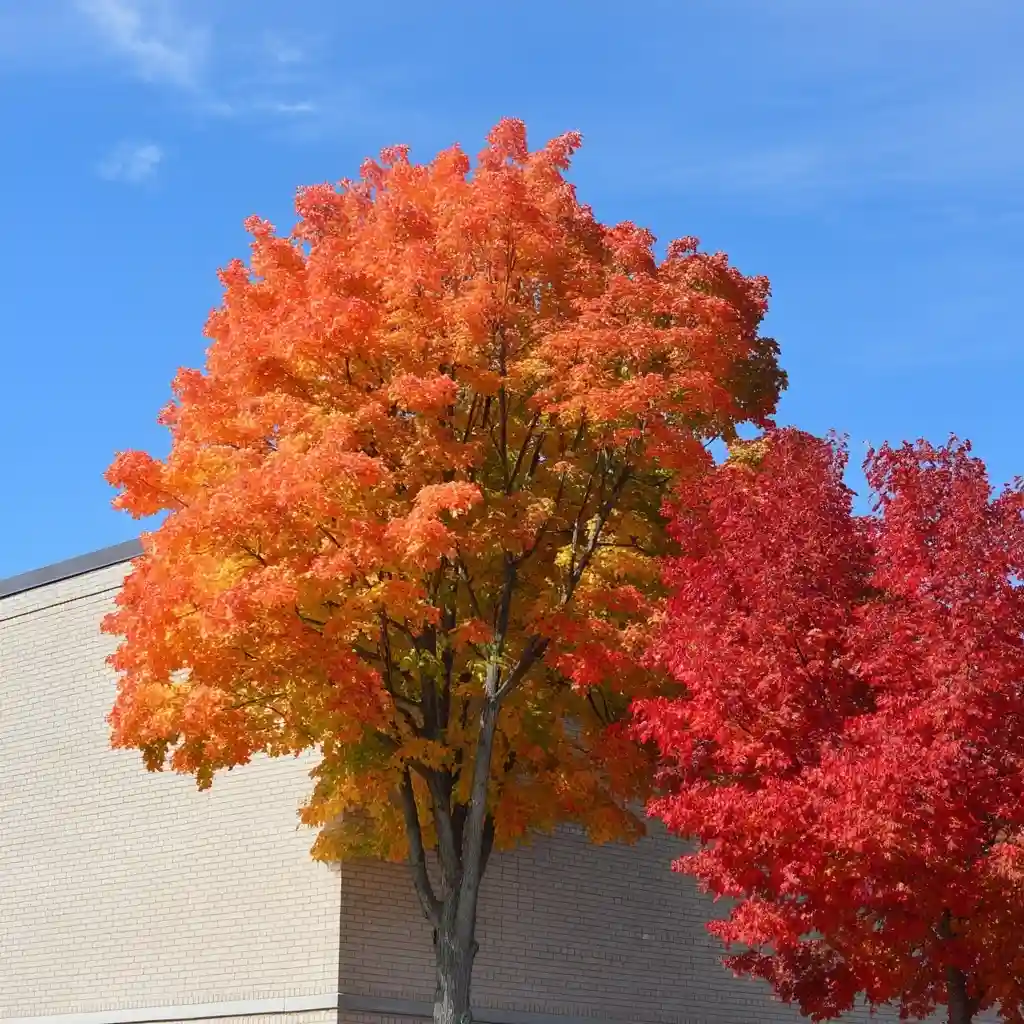
Using autumn trees for landscaping to soften or conceal parts of a building’s exterior can make the space feel more inviting. Sugar maples and red maples are excellent for this purpose, offering vibrant yellows and reds that draw attention away from plain walls or structural elements you’d rather downplay. As the leaves change and eventually fall, they also create a shifting seasonal screen that adds interest throughout the year. This natural approach works especially well for large façades, garages, or outbuildings that benefit from a burst of color and texture.
20. Bring In Bushes
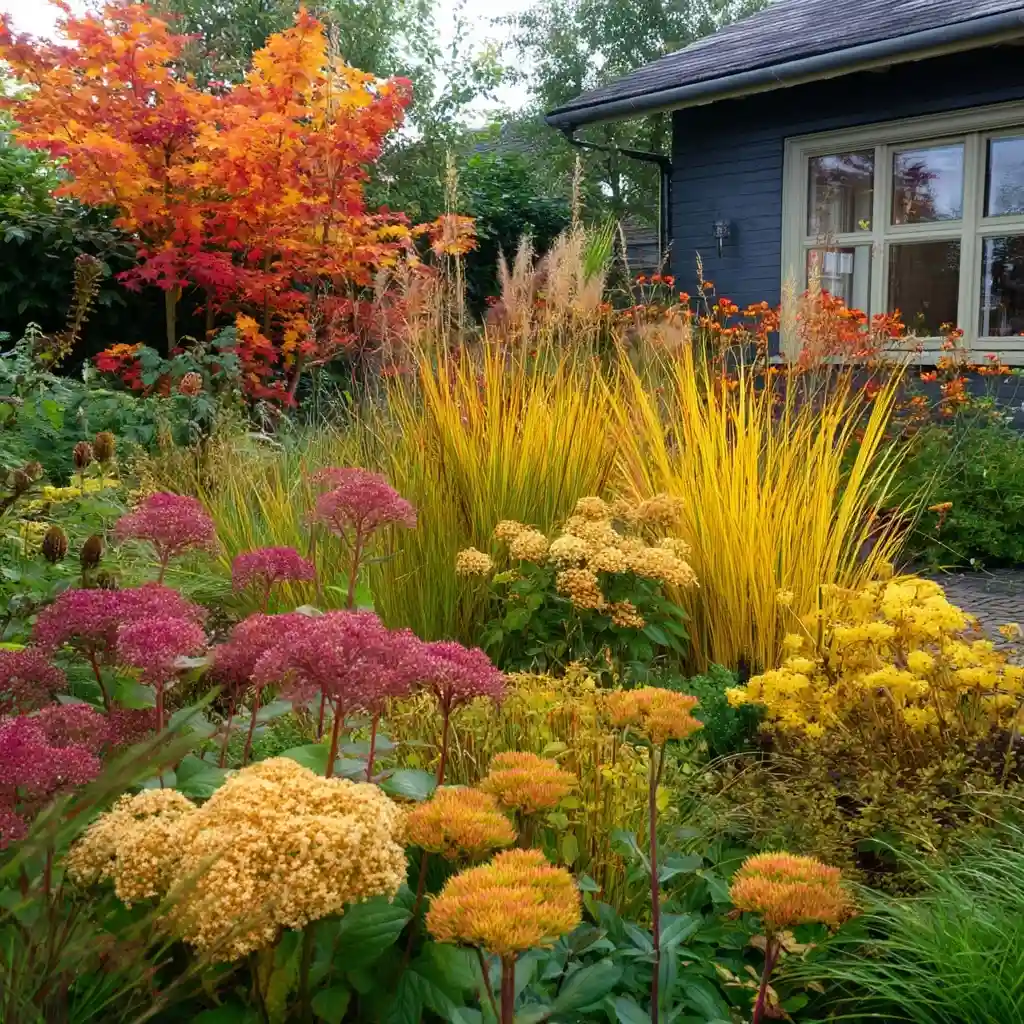
Combining shrubs with autumn trees for landscaping creates layers of color and texture that make your garden more dynamic. Golden Japanese forest grass can brighten shaded spots beneath fiery maples, while late-season plants like rudbeckia seed heads and Sedum ‘Autumn Joy’ add rich browns and deep reds. Bushes not only fill gaps between trees but also provide year-round structure when deciduous leaves have fallen. By thoughtfully pairing low- and mid-height plants with colorful trees, you achieve a balanced design that feels complete in every season.
21. Try a Minimalist Approach
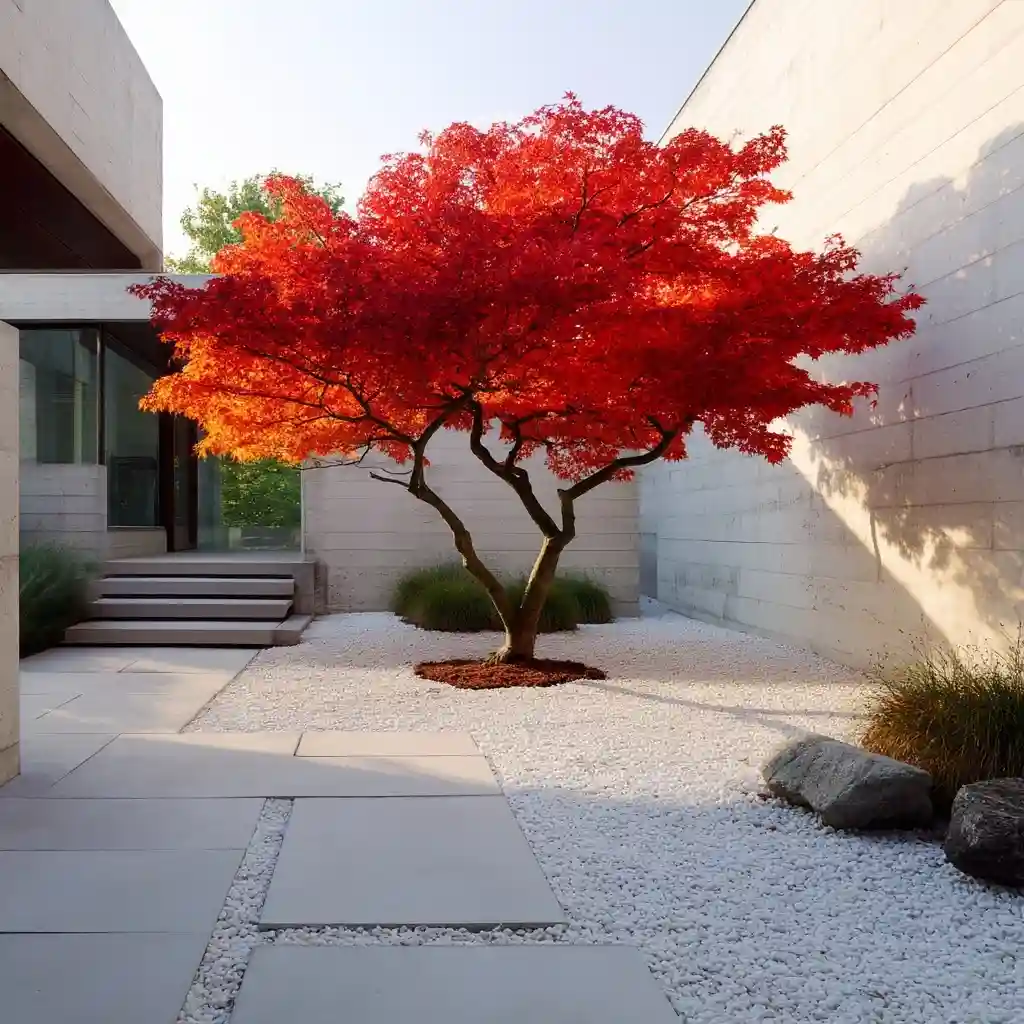
A few well-chosen autumn trees for landscaping can make as much of an impact as an entire grove. The Acer palmatum ‘Osakazuki,’ for example, dazzles with rich reds and fiery oranges, standing out beautifully on its own or in a small group. Its compact size and elegant branching make it a favorite for modern, minimalist gardens where every element is intentional. By limiting your palette to just one or two striking species, you let each tree’s shape, color, and seasonal changes take center stage without visual clutter.
22. Focus on a Small Area
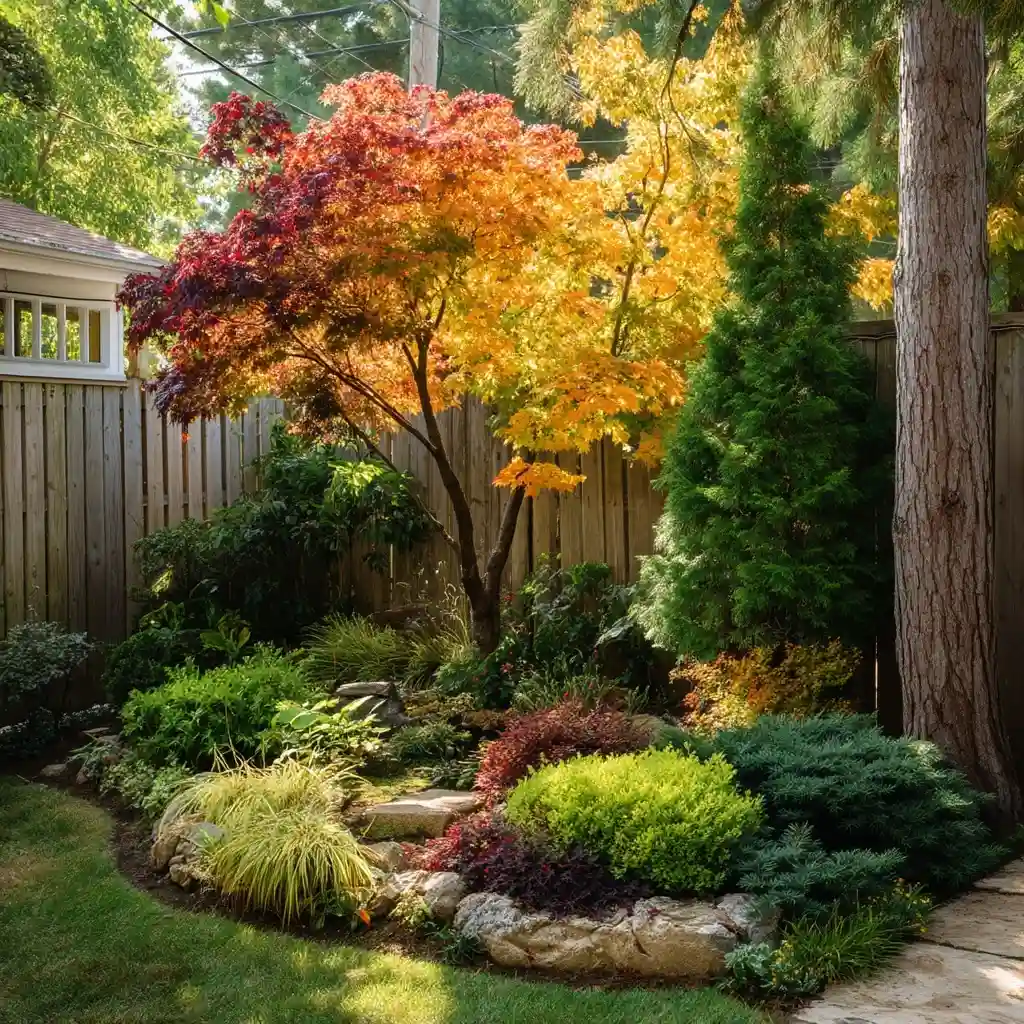
Designing with autumn trees for landscaping doesn’t require vast space—sometimes a compact corner can deliver the most impact. Pairing colorful maples with deep green evergreens in a small bed or courtyard creates an intimate, jewel-like display of fall color. The close proximity of contrasting foliage intensifies the visual effect, while the smaller scale makes maintenance easier. This approach is perfect for urban gardens, patios, or side yards where space is limited but seasonal beauty is still a priority.
23. Maintain the Tree Color
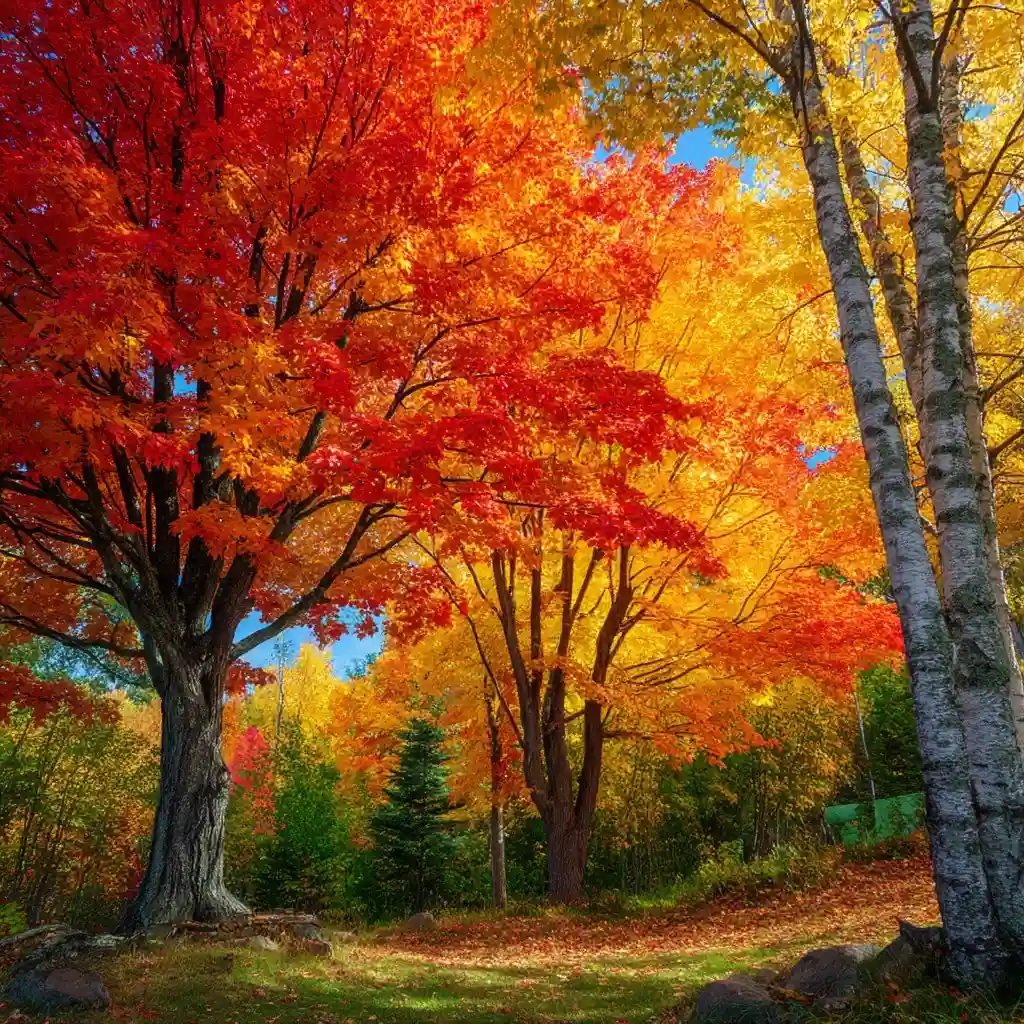
To keep autumn trees for landscaping vibrant year after year, choose species known for reliable fall hues, like sugar maples, oaks, and birches. These trees consistently deliver warm shades of orange, yellow, and red, especially when planted in the right soil and sunlight conditions. Regular watering during dry spells, mulching to protect roots, and pruning to maintain healthy growth all help preserve their color quality. By caring for your trees year-round, you ensure that each autumn brings the same dazzling display without fading or dullness over time.
24. Utilize a Sloping Landscape
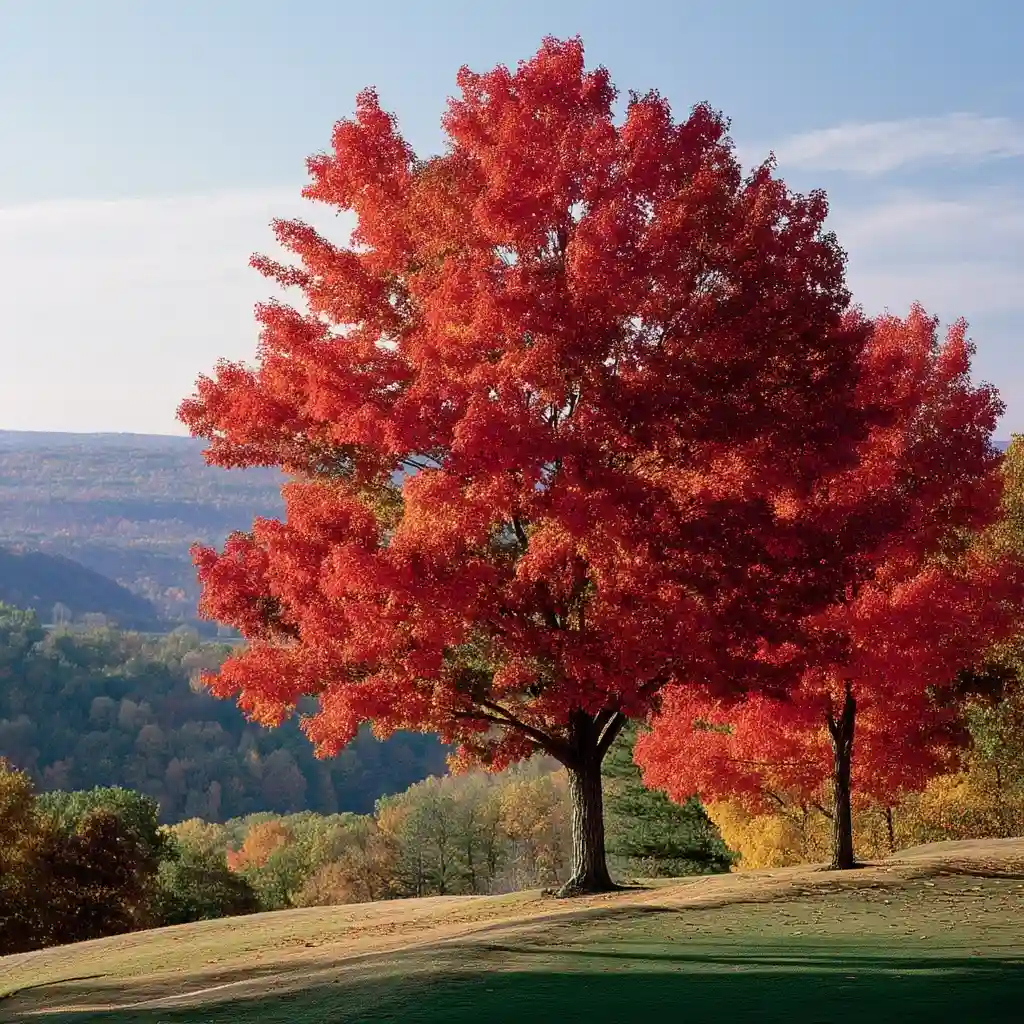
Slopes can be challenging to design, but they offer unique opportunities for showcasing autumn trees for landscaping. Red oak (Quercus rubra), with its bold canopy of crimson foliage, thrives on uneven terrain and adds a dramatic burst of color visible from a distance. Its deep roots help stabilize soil, reducing erosion, while its height and spread make it a commanding focal point. Planting in staggered rows along the slope creates layers of fall color and enhances the natural contour of the land, turning a tricky area into a show-stopping seasonal feature.
25. Embellish the Entryway
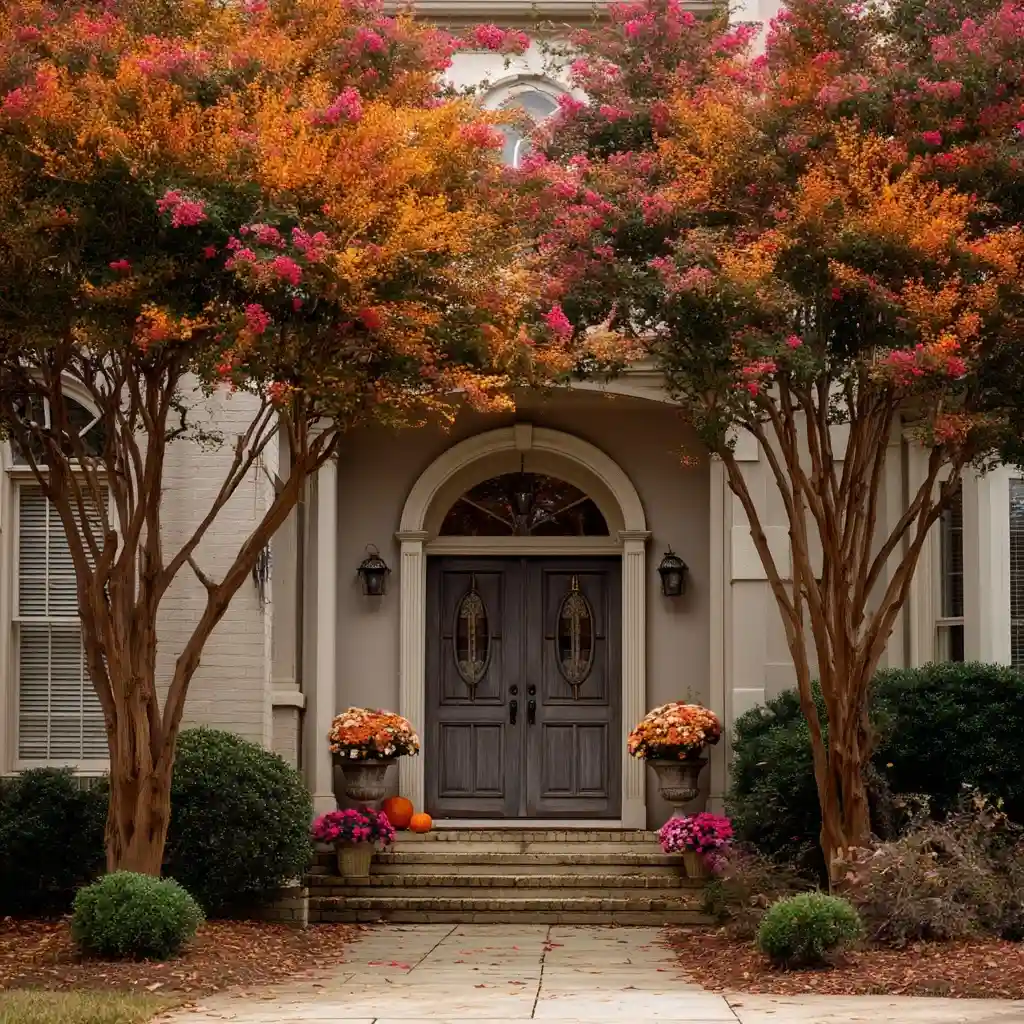
Framing your front steps or doorway with autumn trees for landscaping creates a warm, welcoming atmosphere for guests. Crape myrtles (Lagerstroemia indica) are an excellent choice, offering vibrant fall foliage along with attractive bark and summer blooms. Positioned on either side of an entryway, they guide the eye toward your home while adding height and seasonal color. Their mildew resistance and manageable size make them a practical yet beautiful option for entry spaces, ensuring your home’s first impression is as stunning in autumn as it is year-round.
Conclusion
Incorporating autumn trees for landscaping into your yard design brings more than just seasonal beauty—it creates a landscape that evolves and delights year after year. Whether you choose grand sugar maples, delicate Japanese maples, or versatile oaks, each tree adds its own palette of colors, textures, and benefits. By mixing heights, pairing with shrubs or flowers, and considering your home’s architecture, you can craft a fall display that’s both striking and sustainable. With thoughtful planning and care, your autumn garden will remain a highlight of your property for decades to come.
🌿 Love gardening inspiration? Follow me on Pinterest for bold plant ideas, tips, and seasonal color!
More Posts
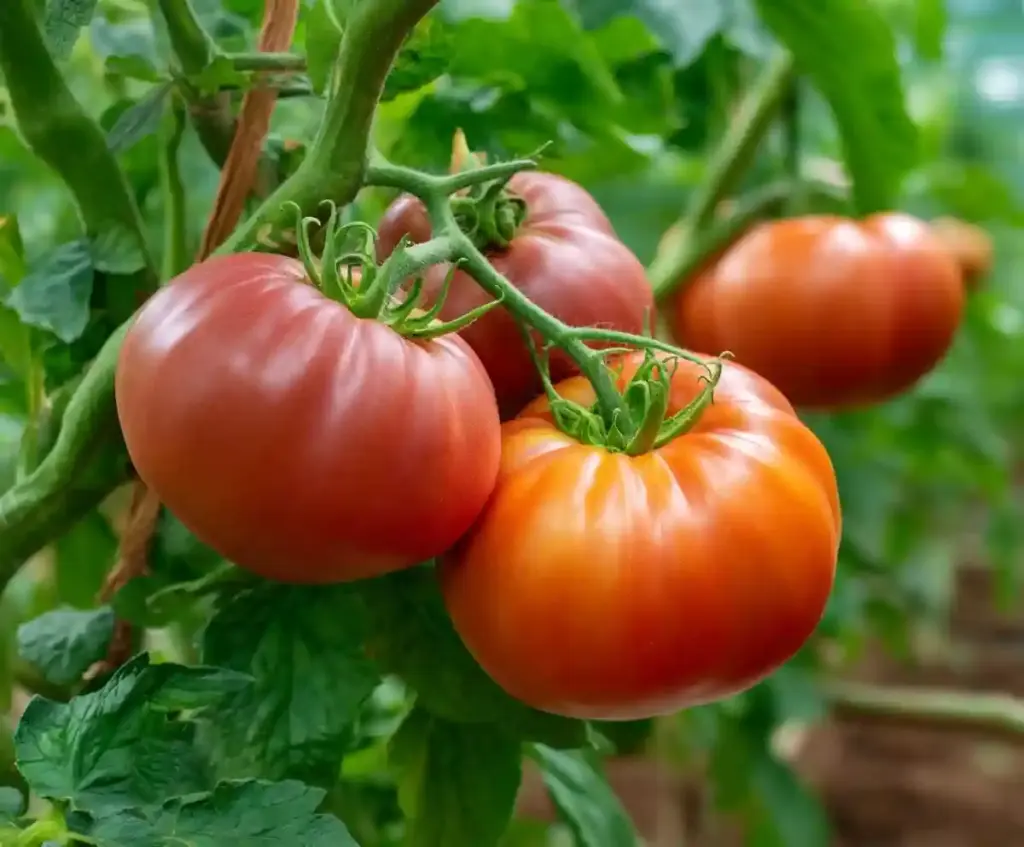
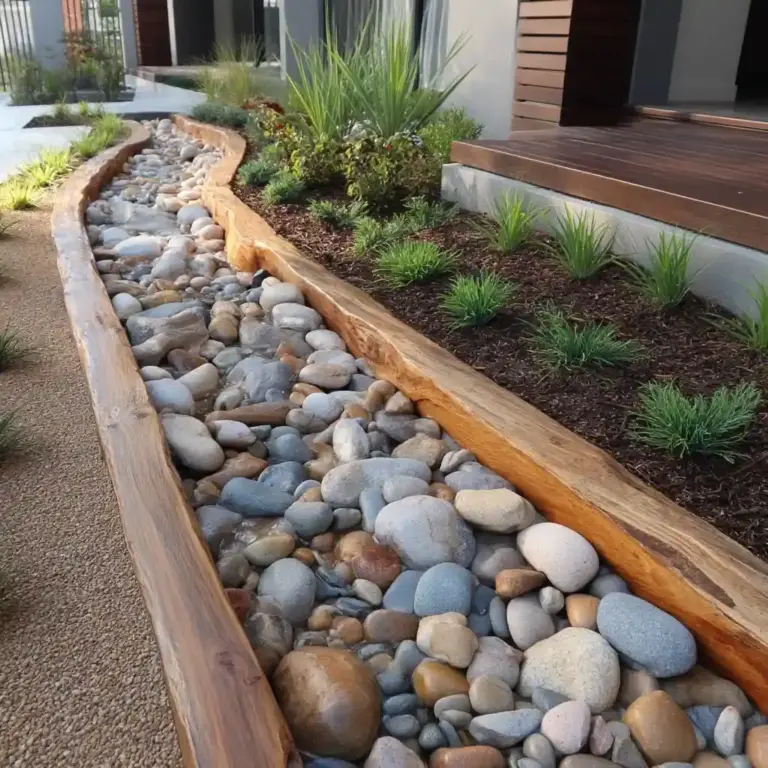
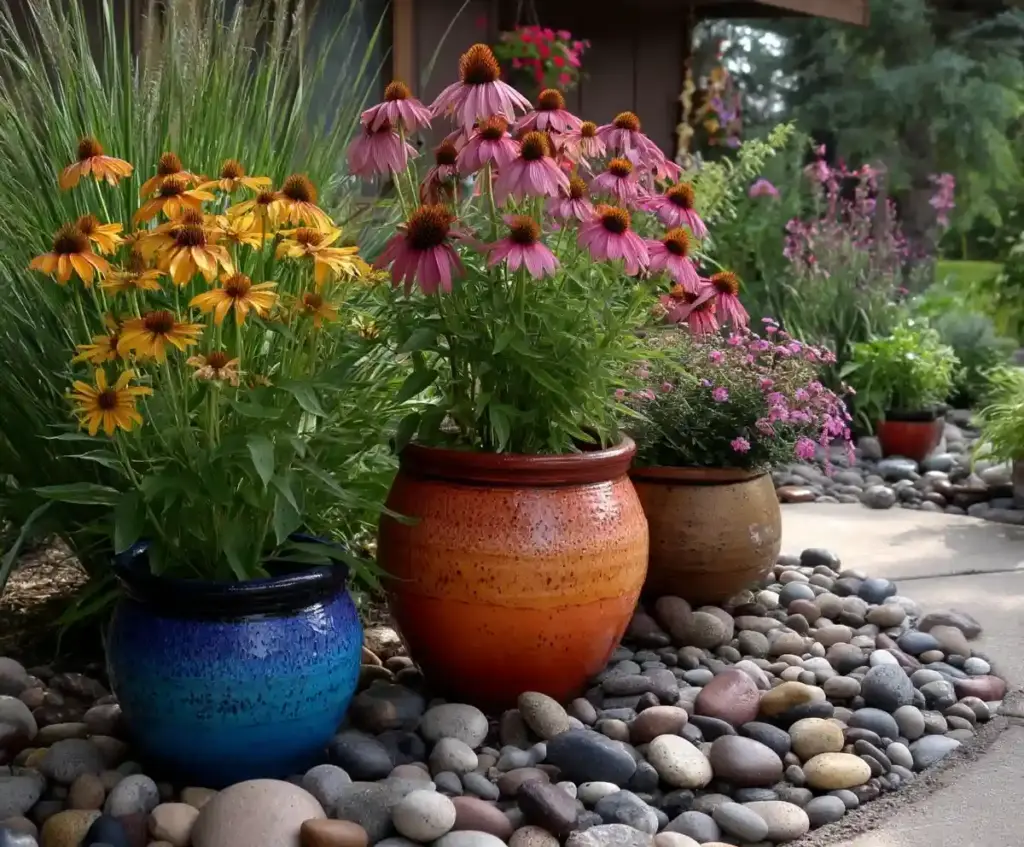
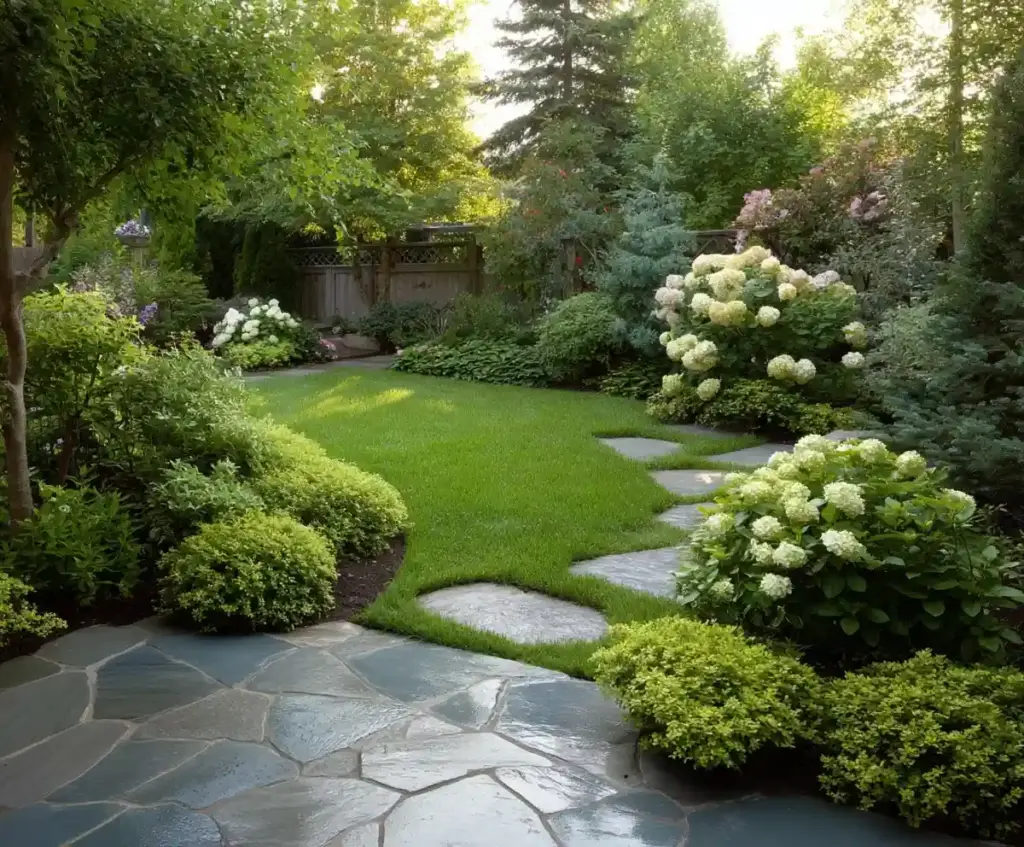
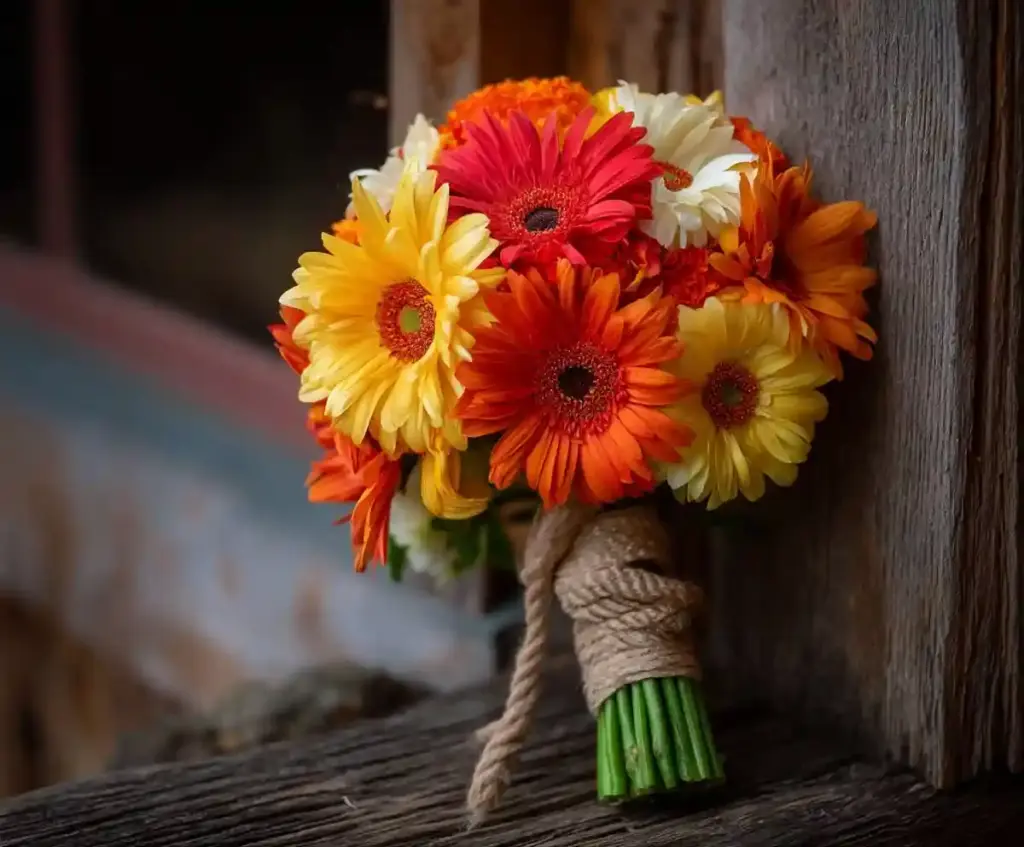
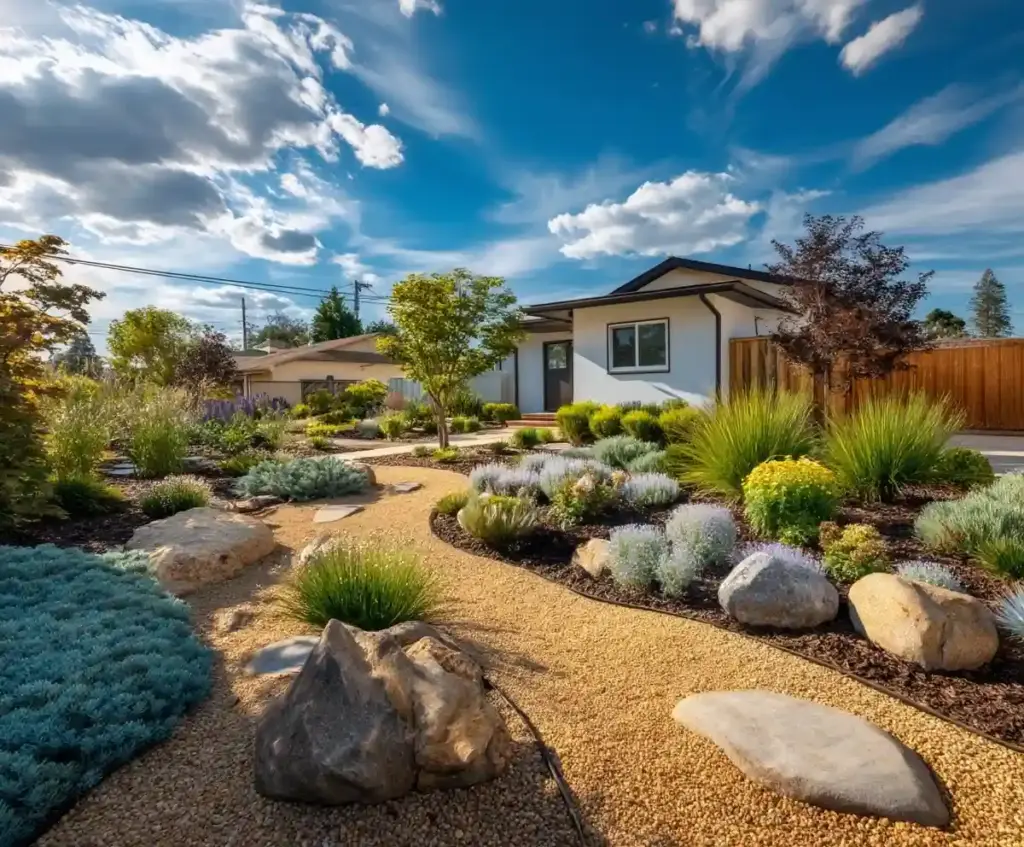

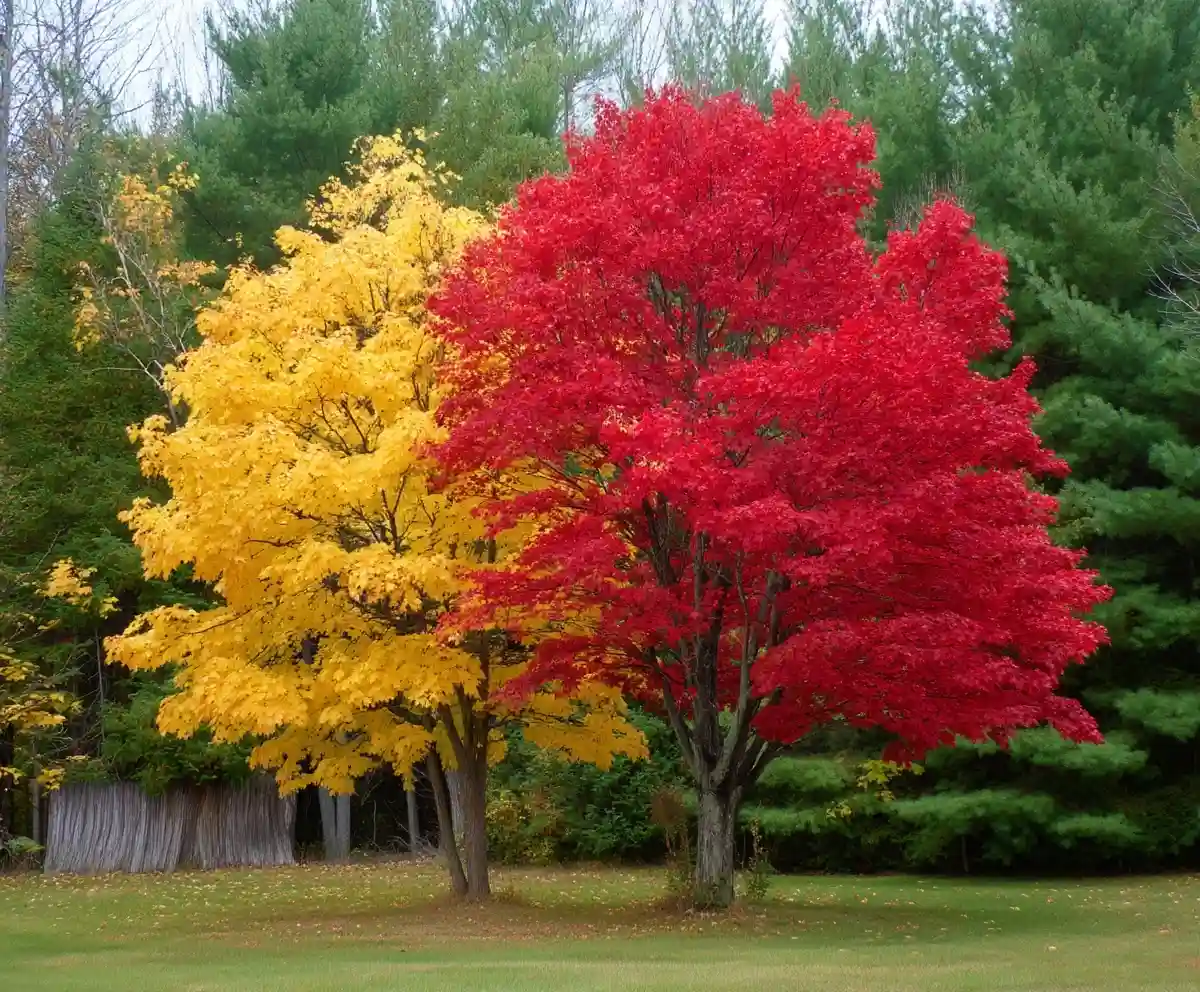


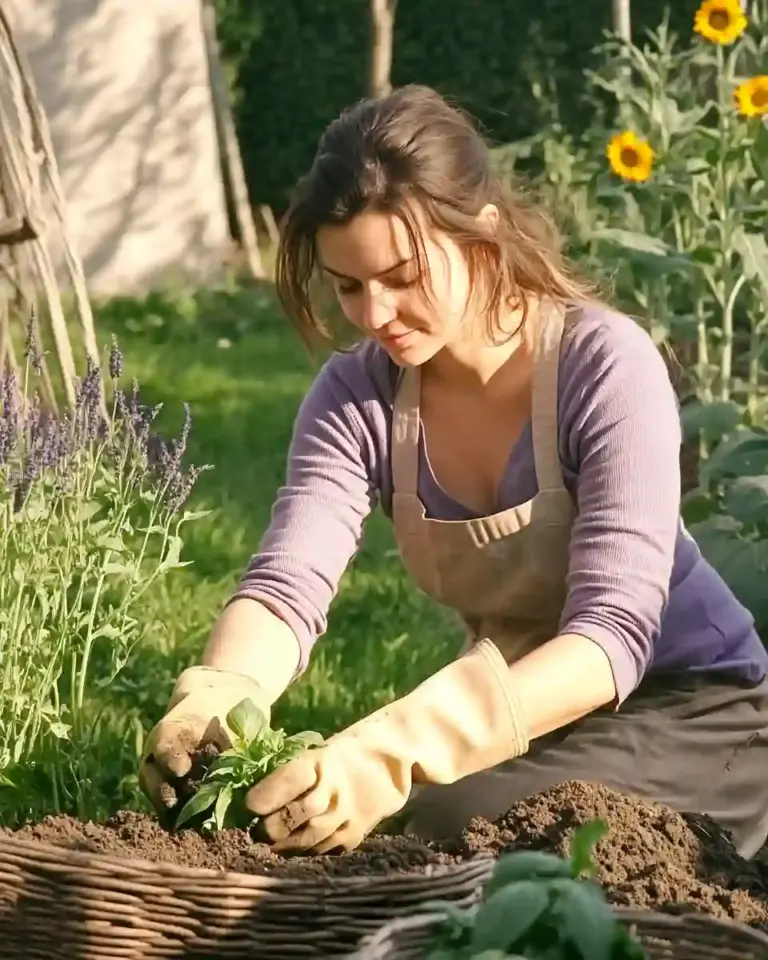
What zones will these trees do the best